Met 'The Beast' door Noord-Amerika
Salmon Hunt
by Isabelle Demaeght, september 10th, 2022
Since the weather forecast is favorable, after posting the last blog, we decide to visit the Denali Park a second time. We camp at the spot where we were "blown away" earlier. Perhaps we are defying fate? (It was windy and it wasn't hot either, but we didn't have to evacuate.)
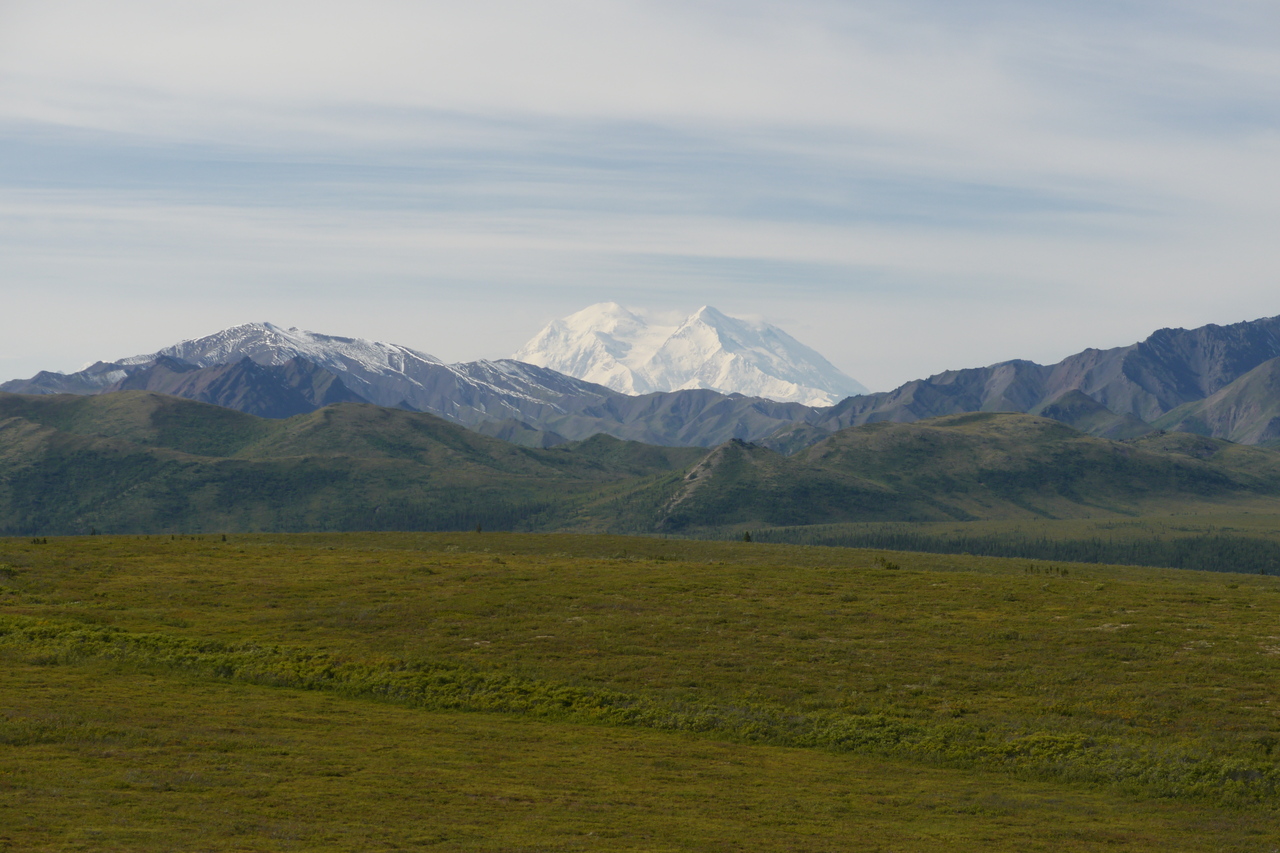
We take the same bus ride through the park with driver Rex under a semi-overcast sky. There is little wildlife to discover because the animals are elsewhere, panting due to the heat (up to 20 ° C). We do see several caribou that seek the lower located rivers for cooling. Or are they bothered by mosquitoes? Mount Denali (himself) is majestic. Beautiful, a picture. Our second visit is well worth it. Rex makes the ride even more fun with his dry humor ("I'll answer all your questions, but only after we no longer have cell phone coverage, so you can't Google my answers"). The problems with the permafrost also come up again.
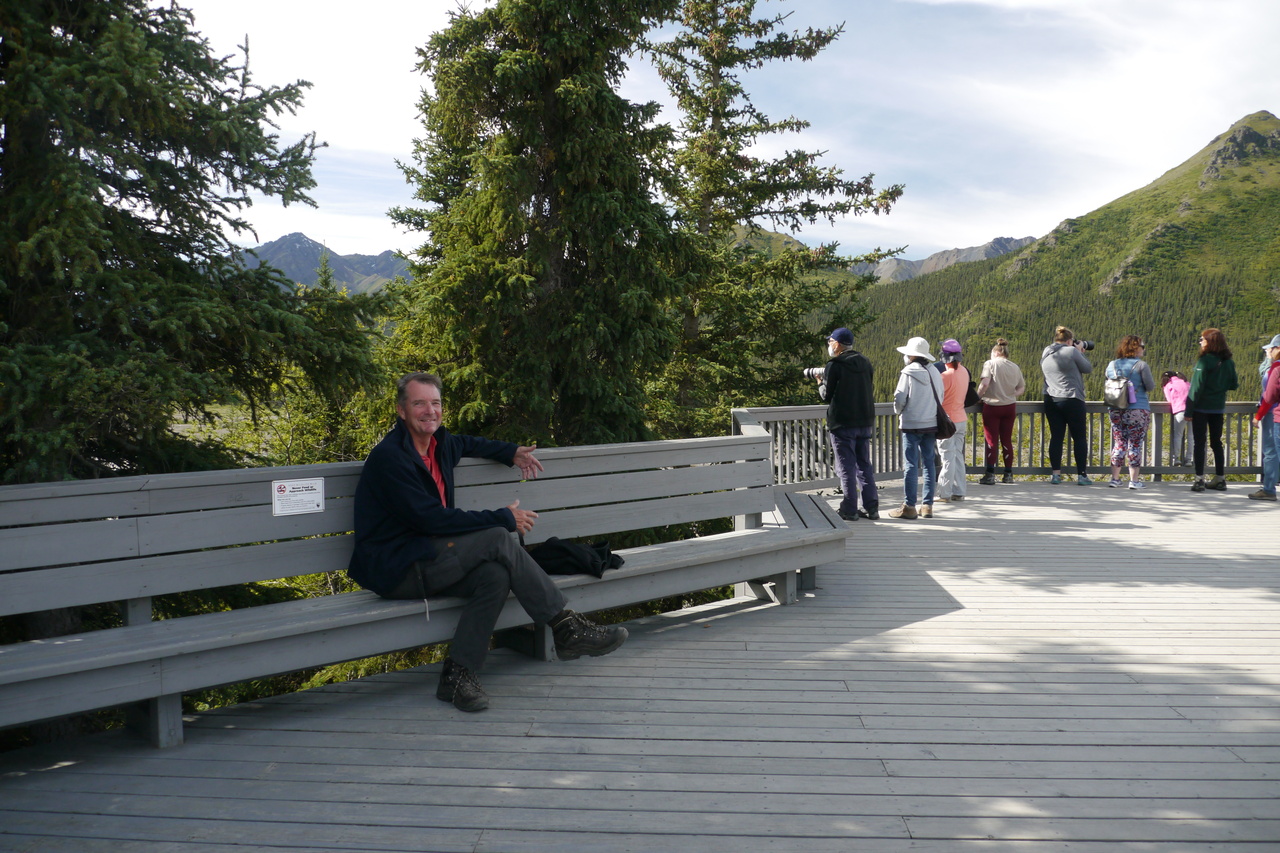
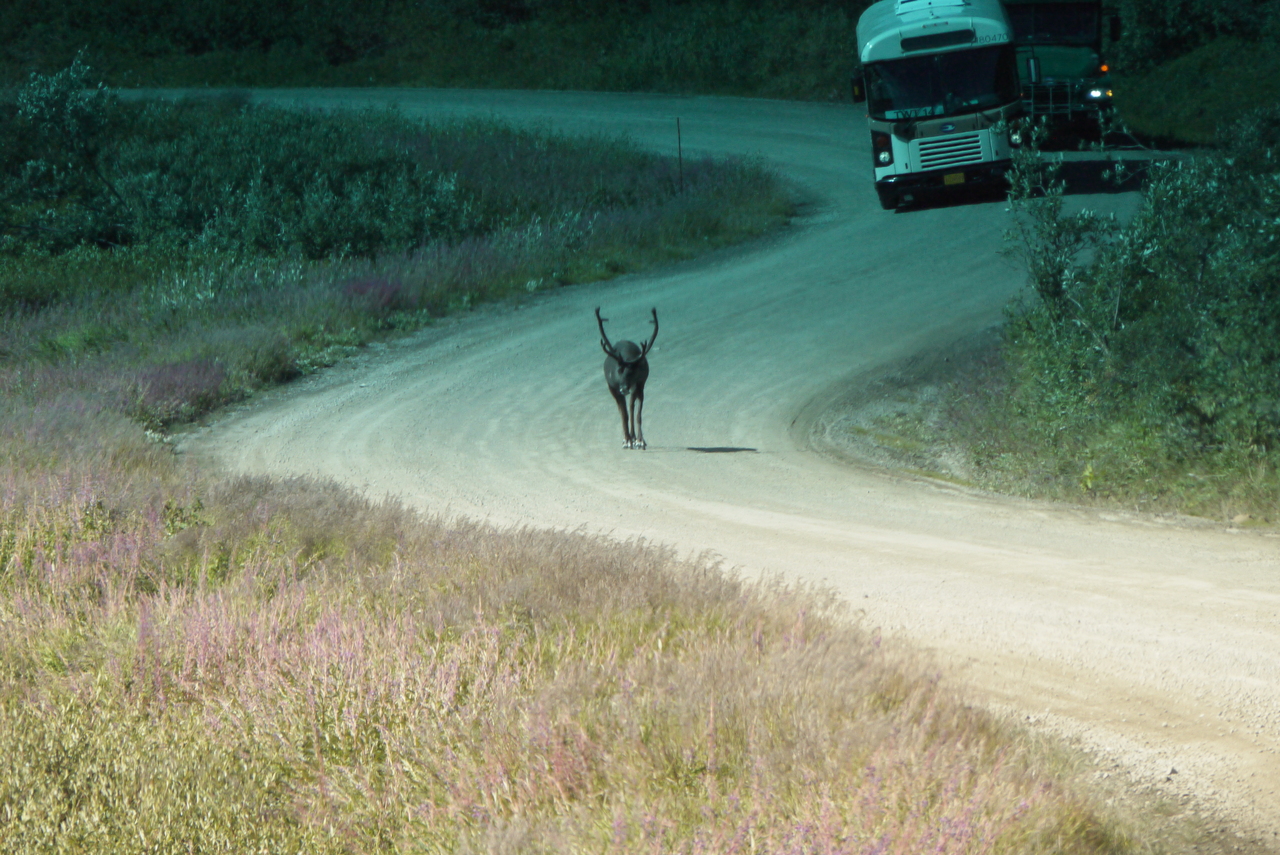
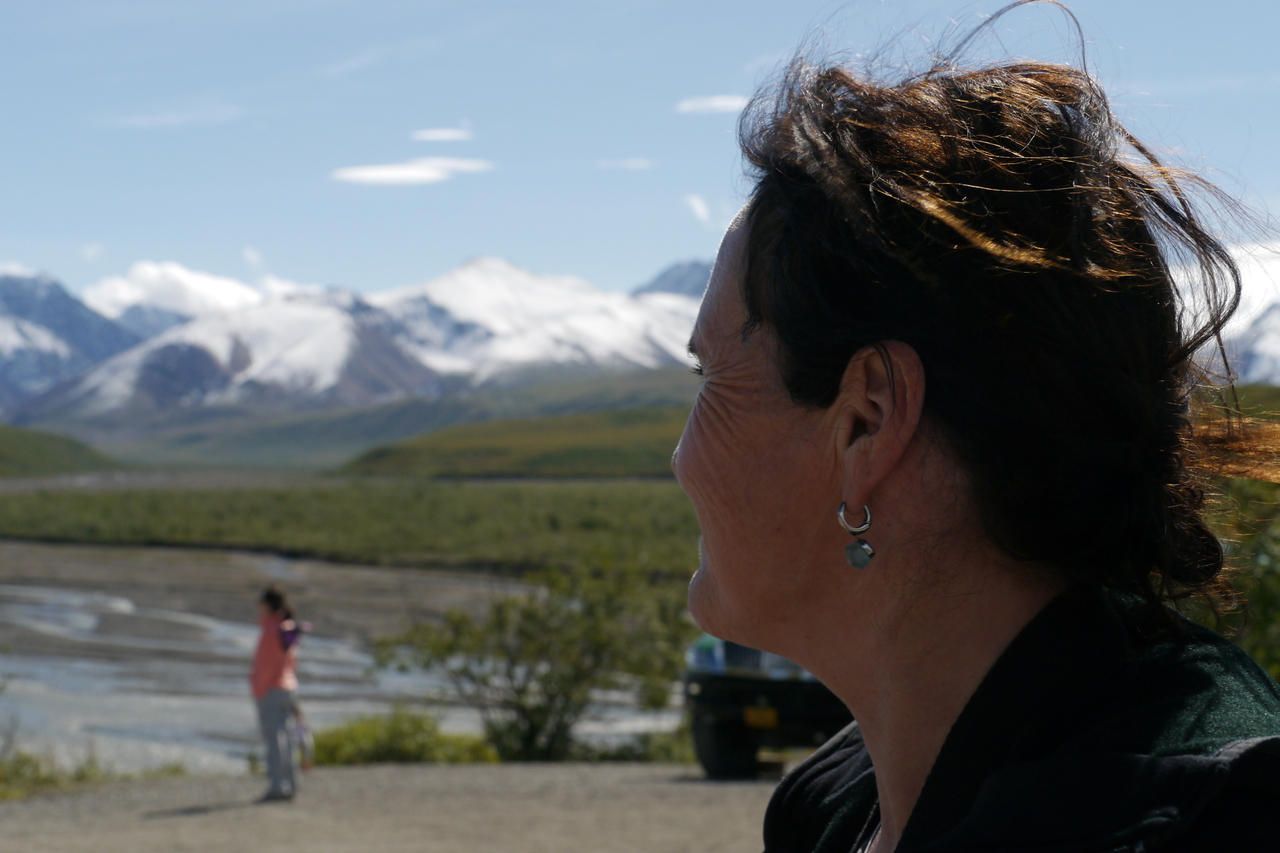
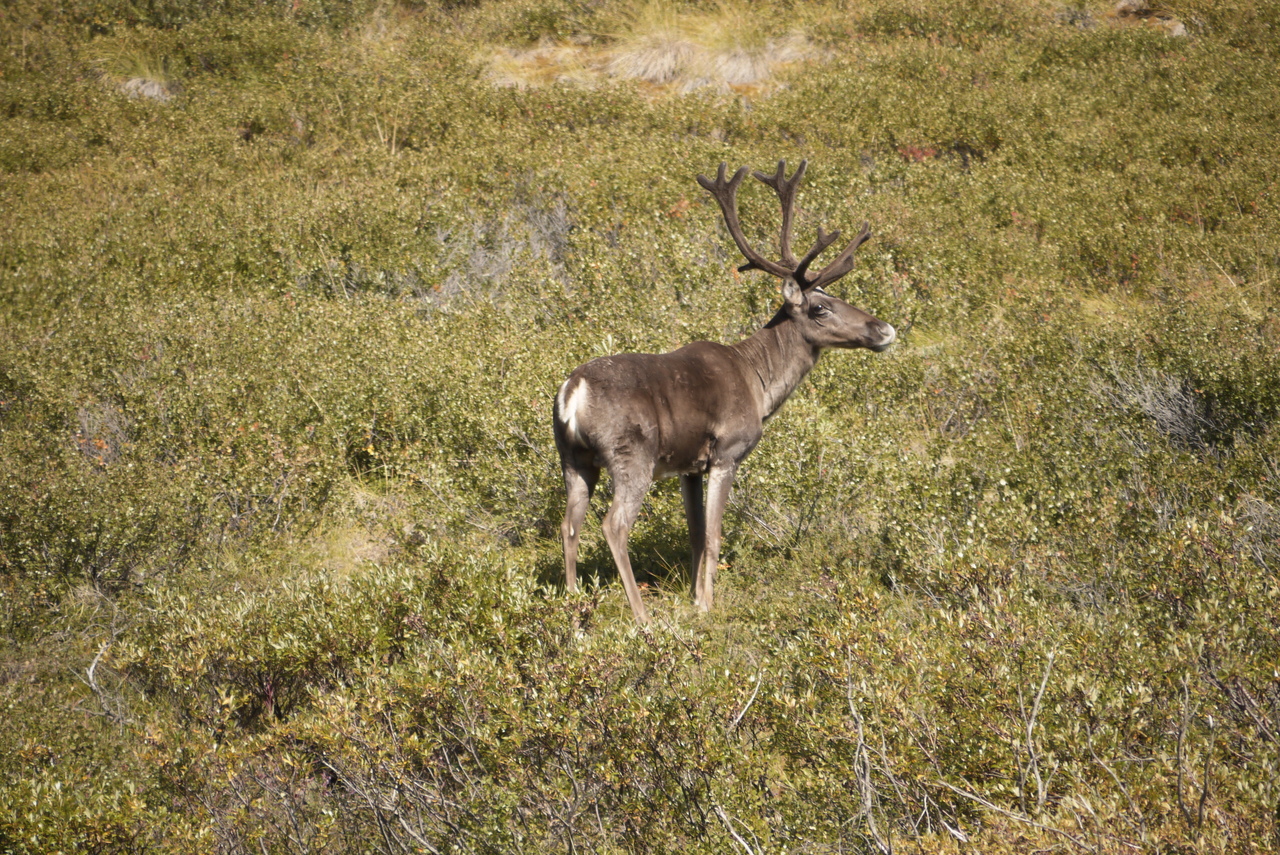
Here in the far north the top layer of the earth never thaws. The frozen ground is firm enough to build homes, roads etc on it. Houses (and the Alaska pipeline) do have to be on an elevation because heating would cause the permafrost to thaw. Bridges and large buildings are placed on pile foundations. Asphalt roads, which lie directly on the ice, face problems: global warming causes the top layer to thaw, and as a result the roads sag. The ground on the flanks of mountains also thaws and sinks, blocking roads and rivers. It is the reason why the road through Denali is blocked. - Adriaan.
The next day we decide not to hike in the park but to start traveling the Denali Highway. This is a 217 kilometer lonely gravel road heading towards Canada. There is little forestation so we get an expansive view of a large mountain range. The loneliness is pretty much non-existent at the moment. When we (on day two) find a not-so-private spot (after some searching), it becomes clear why there are crowds: The hunting season for male caribou is opened this weekend. Only a limited number may be killed, and this season the number is remarkably low. Our neighbors, 2 hunters of age, had no luck and will try again tomorrow. Probably due to their bad hunting season, they are a bit grumpy and don't really feel like making contact.
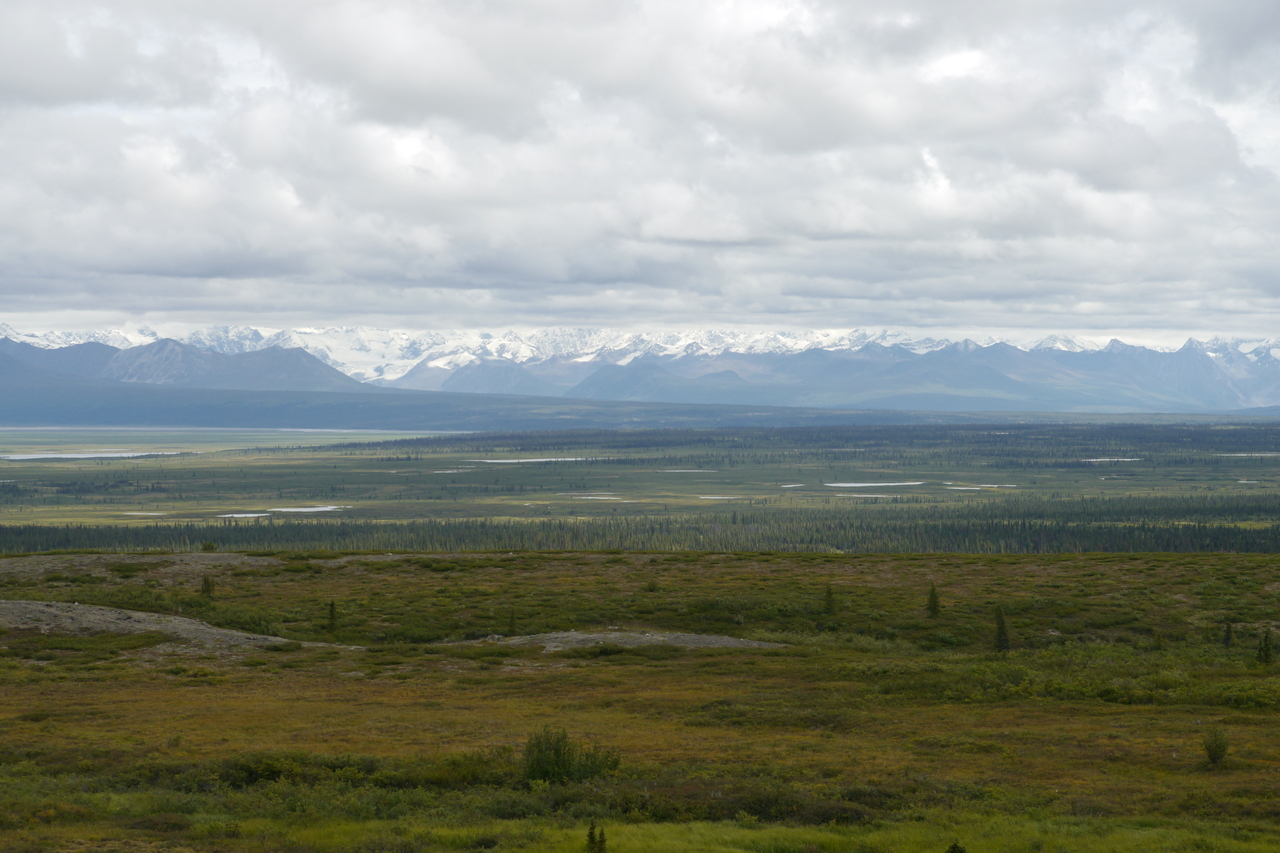
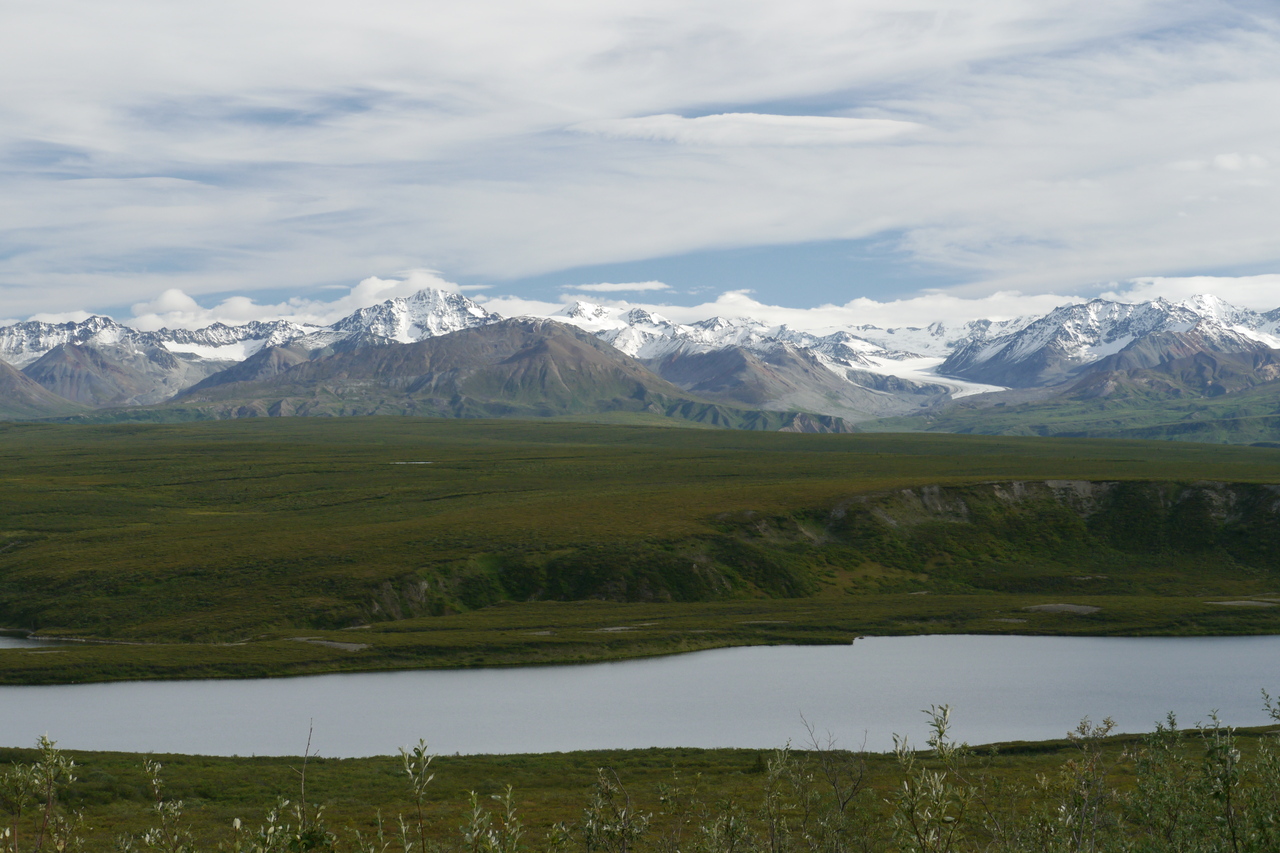
We arrived via the Alaska Highway and we don't like driving back the same way: I choose secondary roads. For several days, we barely see any oncoming traffic. It is slowly becoming autumn here (in August!). The leaves on the trees are already starting to turn color. One of the fun things we do during the hours of driving, besides enjoying the view, is listening to podcasts and music. And we chat a lot. It feels familiar to be on the road as a couple.
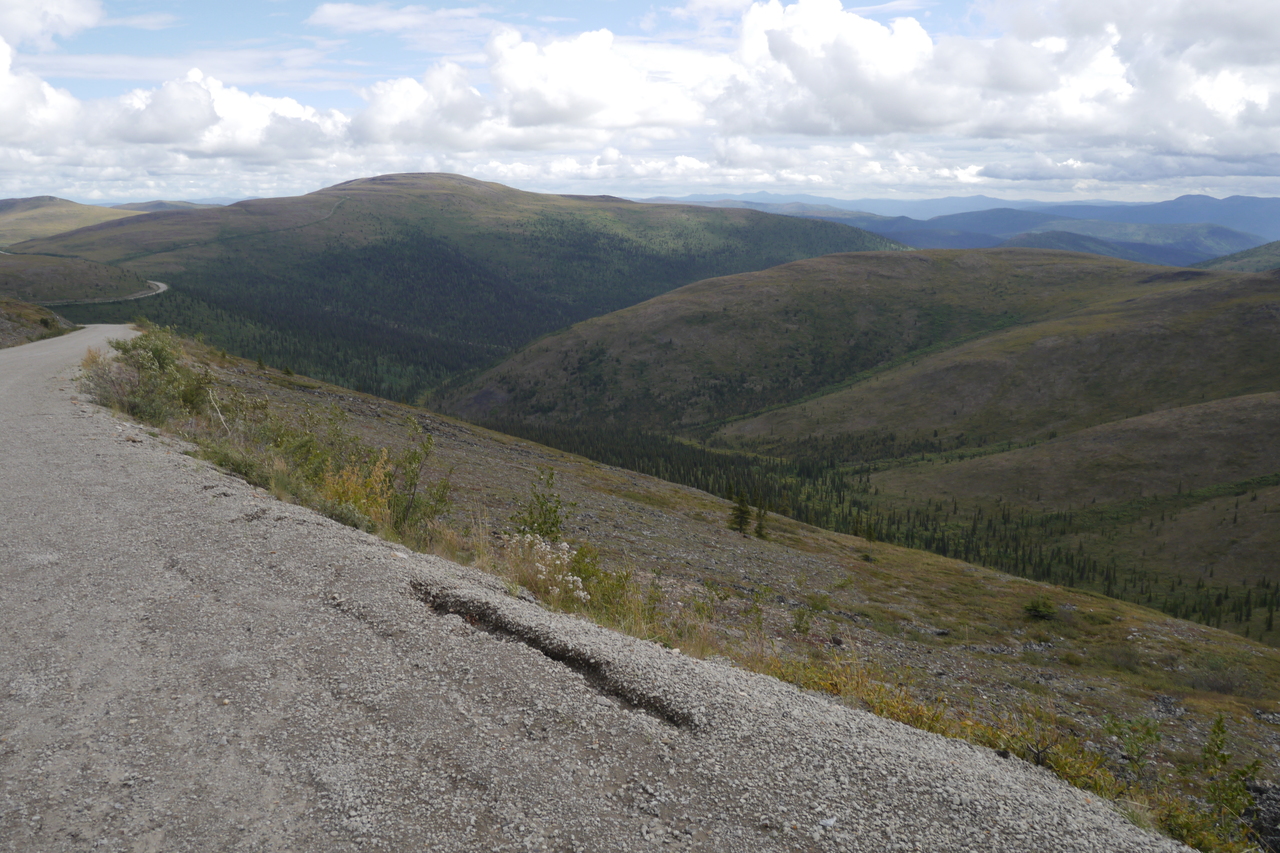
In Watson Lake we take the scenic route south: The Stewart-Cassier Highway. It gets a lot busier with mostly large trailers. (Trailers are caravan trailers that rest on a pivot point in the body of a large pickup truck). We like to camp freely, but these houses on wheels need electricity, running water and a drain (for sewage). We are in the middle of beautiful nature, while the trailers are grouped together in camps, so close together that they can barely fold out an awning. The roaring names on the trailers make us laugh: "Adventurer", "Earthquake" or "Crusader".
Our first camping spot on the Stewart-Cassier Highway is sought after by travelers but whoever comes first is lucky (that's us). Young Swiss travelers Judith and Arthur also find a spot for their big truck. We spend the evening together.
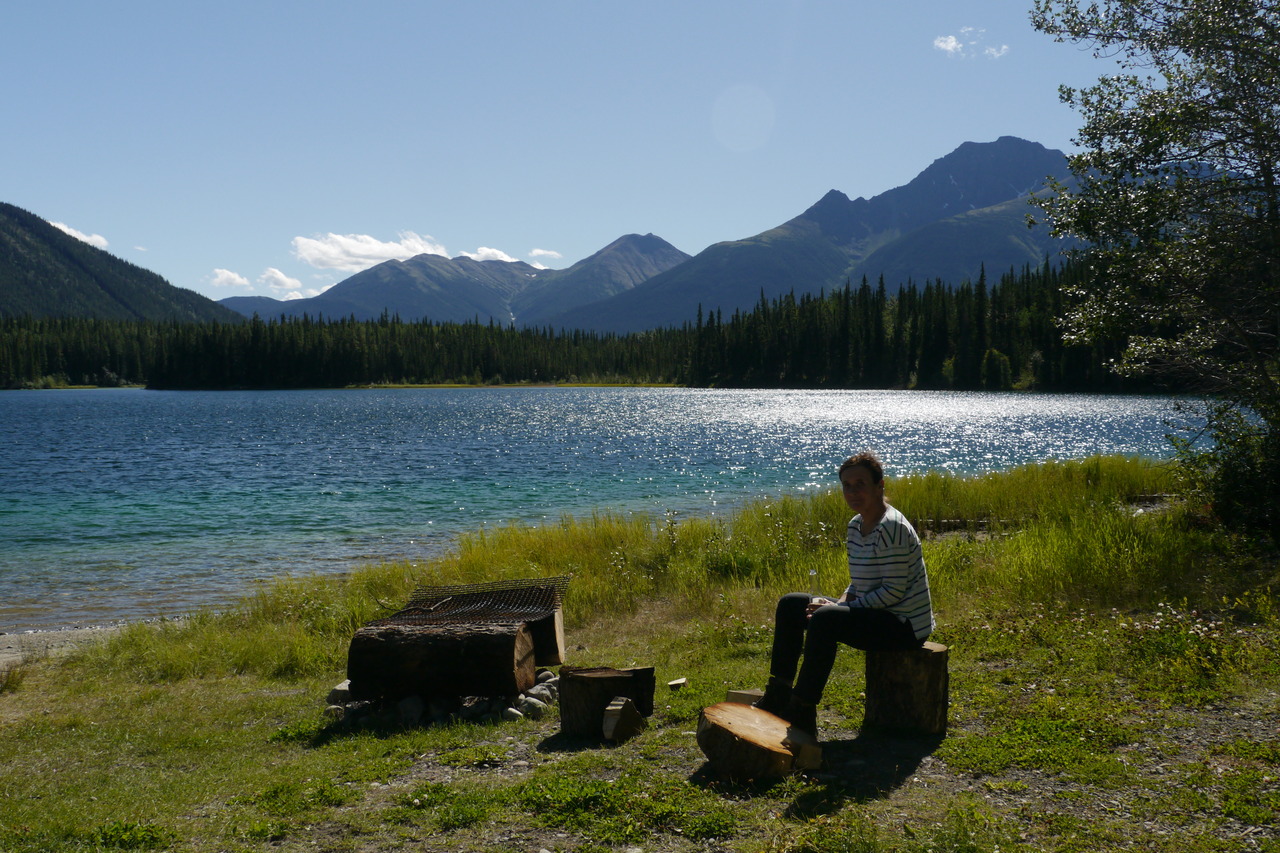
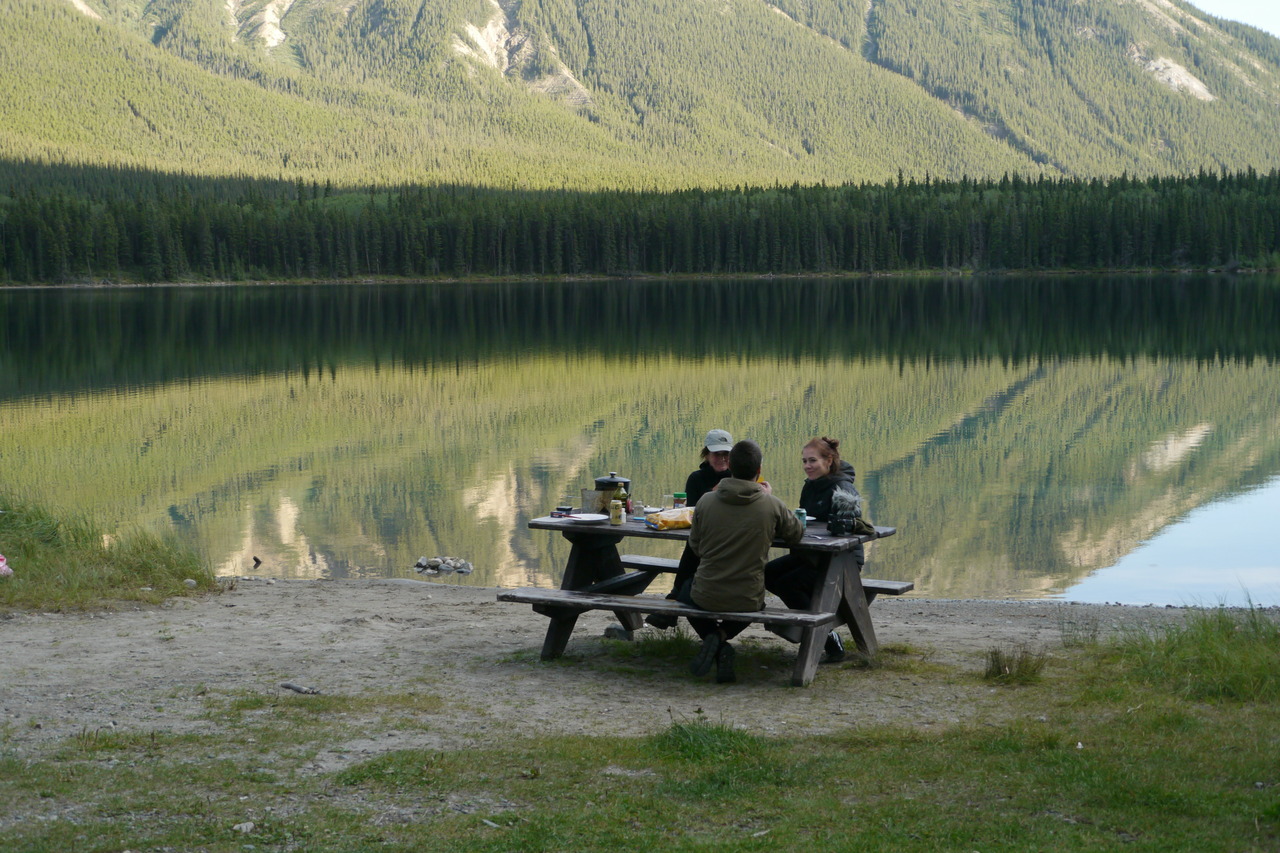
We stop in Jade City where there is a lot of the mineral jade in the ground. There is a TV series ("Jade Fever", 7 seasons long) about the family that runs the mine and its store. Claudia Bunce (the lead character) is proud that the series has been shown in over 100 countries. We buy a present for our friend Anja, who turns out to know Claudia from TV. Later we hear that there are problems because the Ministry of Mines has decided not to continue granting the permit for jade mining on the territory of the indigenous people (Tahltan First Nation). (The word Indians was replaced by First Nation in the 1980s).
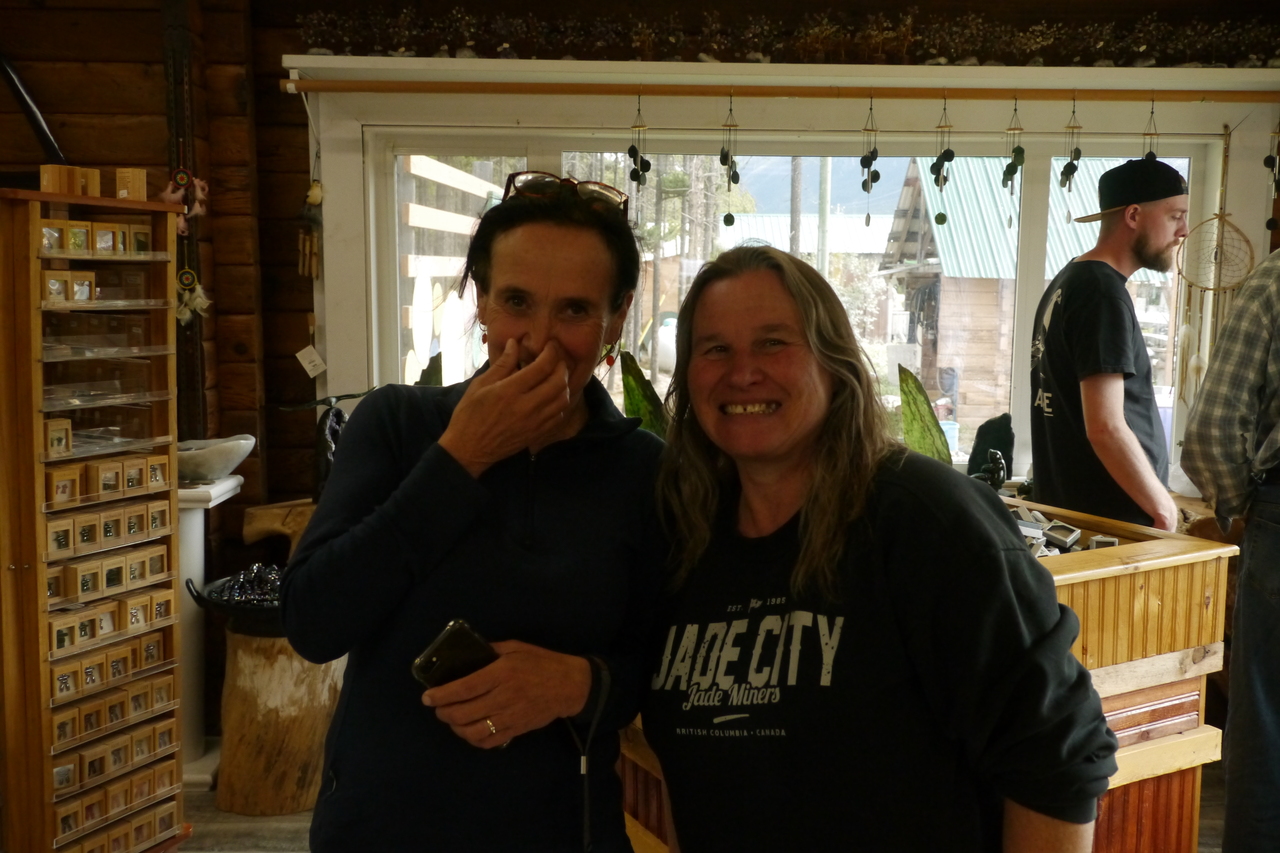
We find the same Tahltan group when we drive the next gravel road along an impressive valley to Telegraph Creek over the weekend. It is a small village with a community of 250, a post office, grocery store and even a small, quaint museum. The caretaker has collected a whole bunch of trinkets that reflect the history of this place. (As the name suggests, Telegraph Creek was an important place for transportation and communication during the gold rush.)
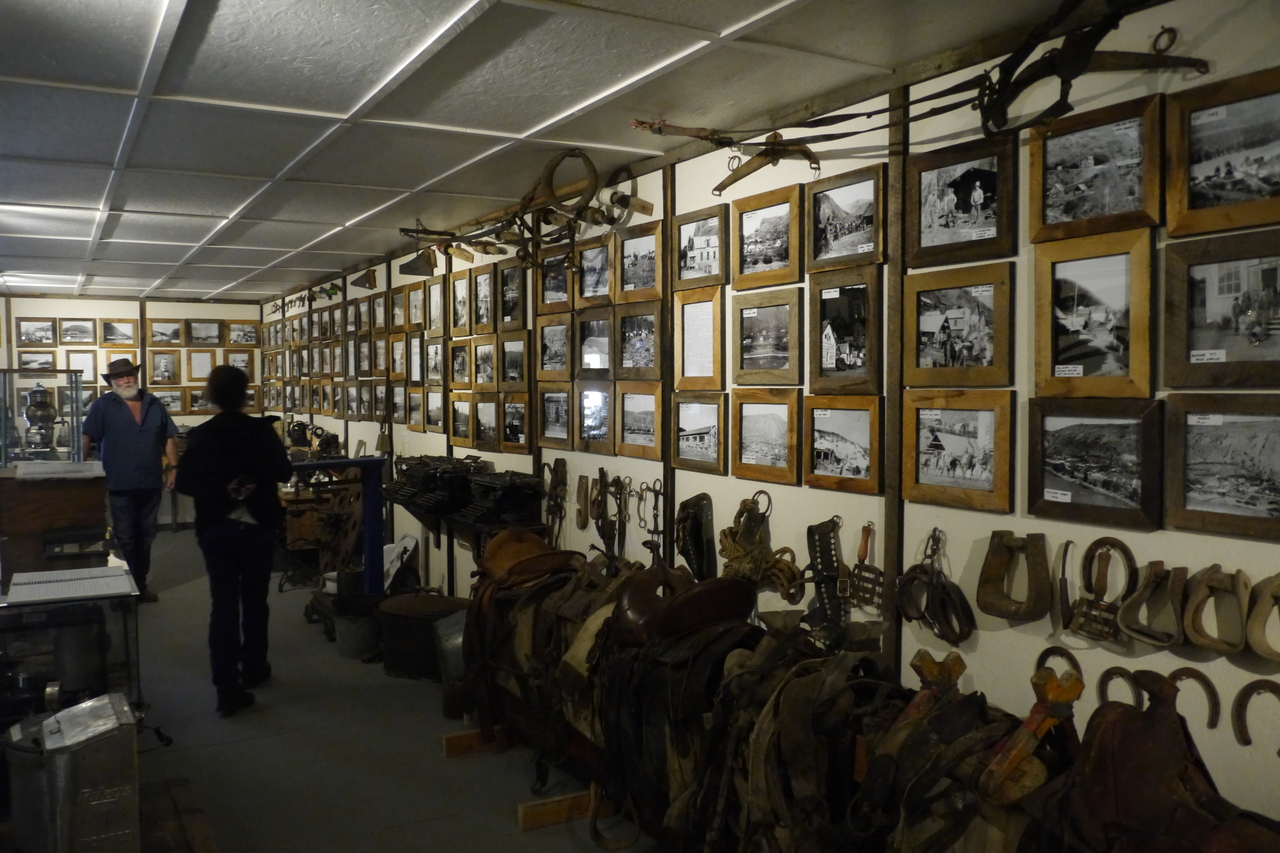
The next place to sleep is by a river. Not really an ideal spot since it is near a noisy iron bridge, but it is only for one night. Like every day, I put my shoes under the car before going to bed. In the morning, my shoes have disappeared. No bears with shoes to be seen, no footwear hanging in trees, no boots in the garbage cans. The youngsters who are now on the other side of the road came driving here when we were already in bed. We suspect they wanted our place and, as an act of revenge, threw my beloved shoes into the river. The grin on their faces when we came to ask if they had seen our shoes was telling. Granted, they weren't brand new, but they had been my favorite footwear since the first day of our world trip and I wasn't ready to say goodbye to my botinnes. It was a moment of bummer. With my Birkenstock slippers we won't get far on our hikes: time for new shoes. There are some outdoor stores in the town of Smithers, but that's going to take a few days.
We take the Glacier Highway to Hyder, a village in Alaska (USA). It is yet another road built for mining in the 1960s. To view Salmon Glacier, we drive the last 15 kilometers on a less accessible road (read: not recommended for large mobile homes or trailers). We get a good view of Canada's fifth largest glacier at the summit. The position of the sun makes it impossible to take nice pictures so we decide to stay the night and take pictures in the morning. We don't go much further as further down the road the landscape has been completely turned upside down by mining.
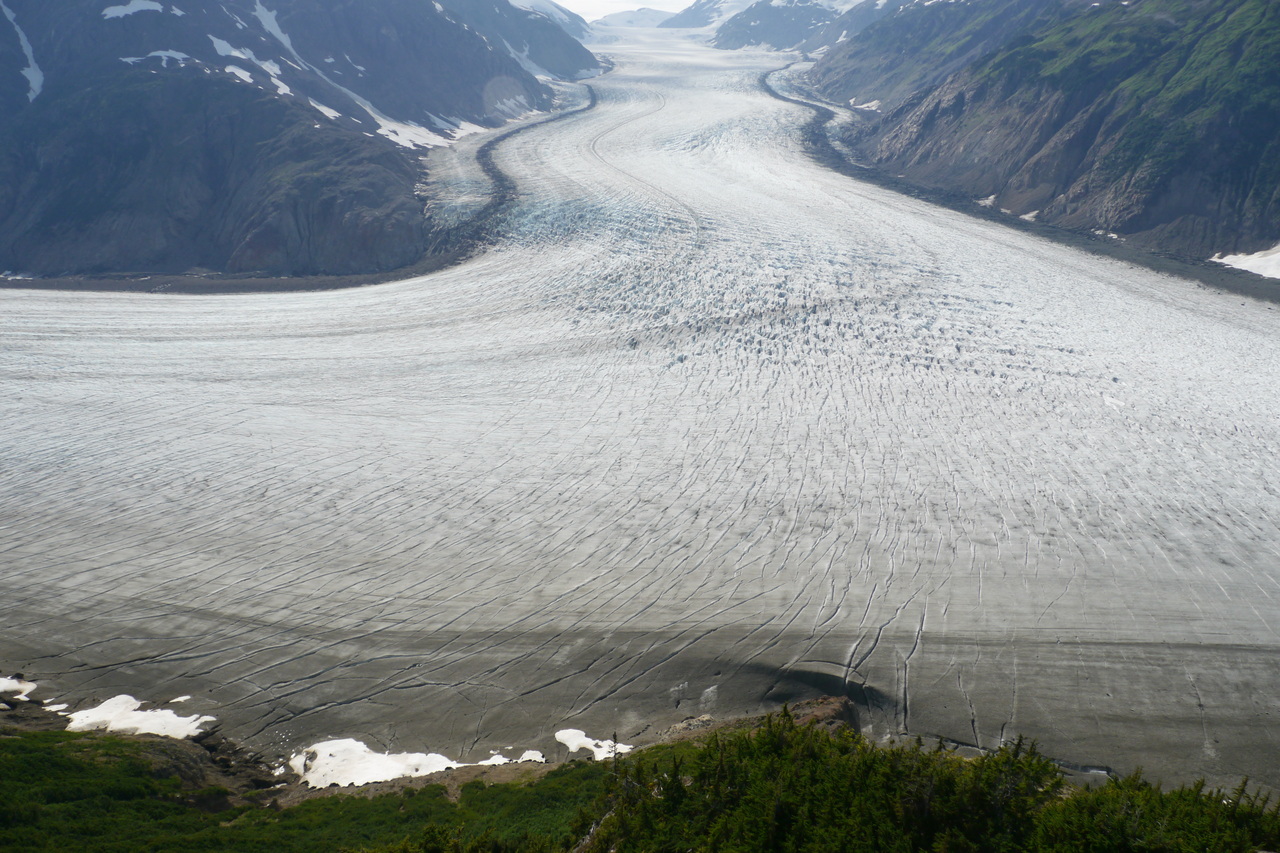
We settle down in front of an old mine shaft and spend the night there. We make pasta and with our binoculars we spot the helicopter that flies routes to and from the various high mine shafts on the mountain opposite us. There is activity until after sunset, which resumes at sunrise, as work continues 24 hours a day (during the short summer). In the morning, the glacier is completely shrouded in clouds, which makes a photo in the rising sun impossible.
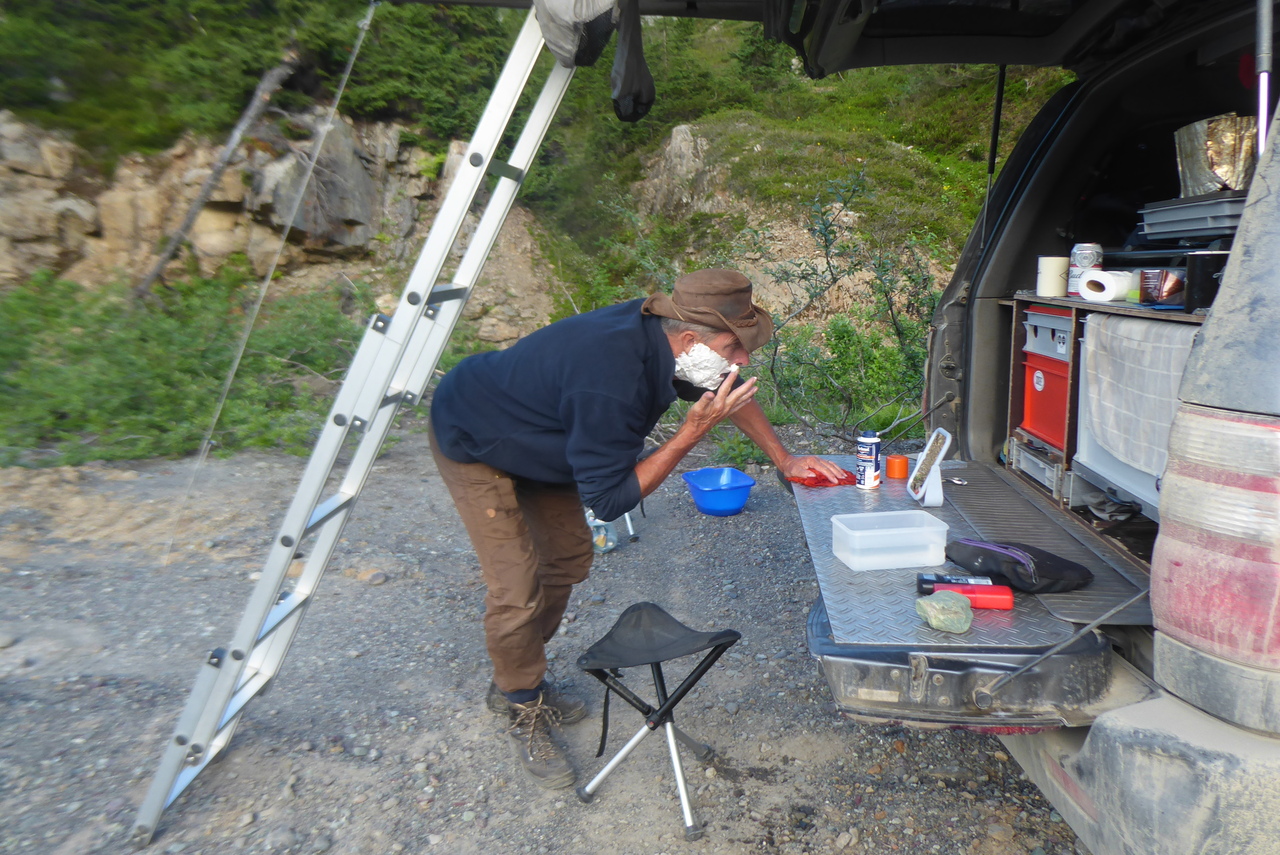
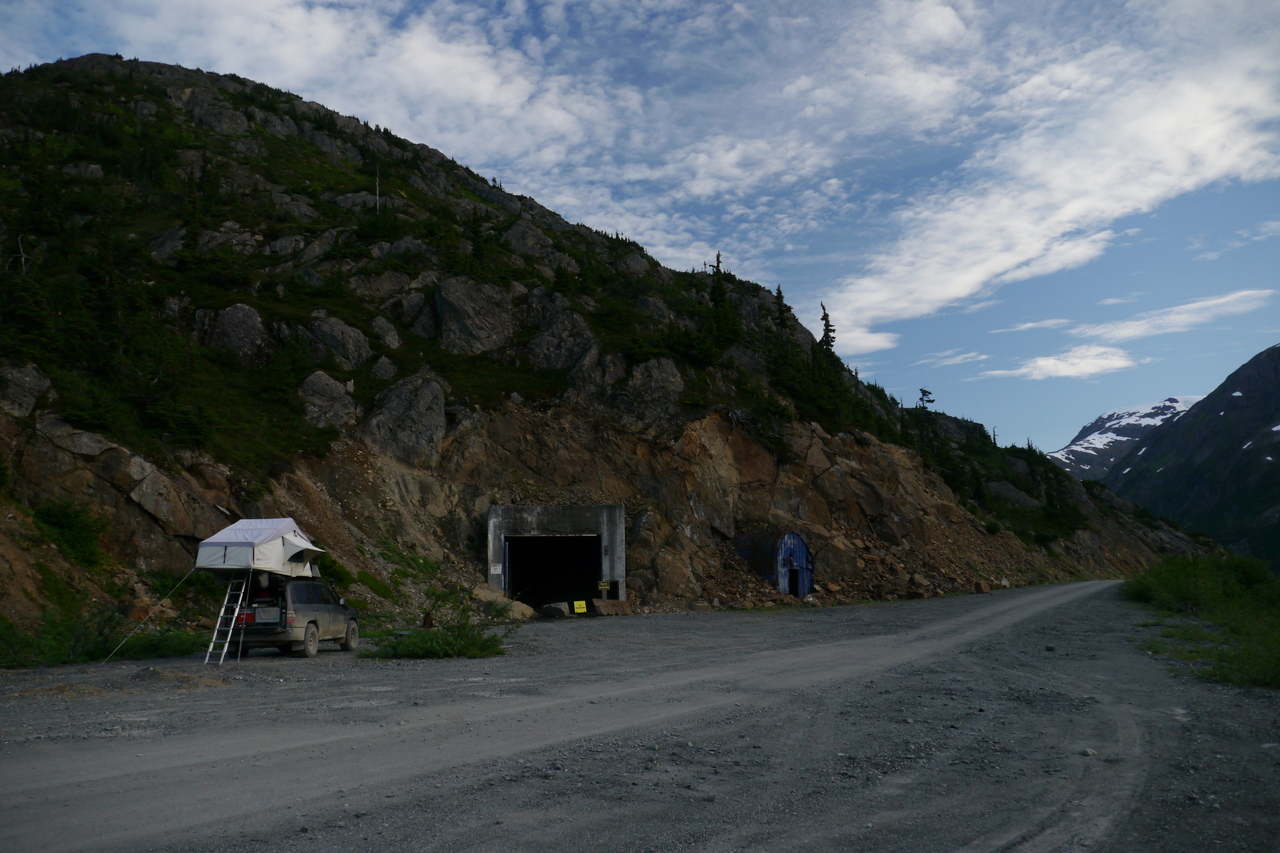
We drive to Fish Creek where Grizzly bears snatch salmon from the river around this time of year. After about half an hour, a bear does indeed show up. With some difficulty, the still young bear catches an unexhausted salmon. (The salmon are here to reproduce, after which they die of exhaustion.) Bears eat the most calorific parts first (the brain - lots of protein), then the eggs (if the salmon was female) and then the rest, if the fish is "fresh" enough. Eating this much is important to build up the subcutaneous fat layer. Grizzlies need to store all that extra fat before they begin their hibernation. The beast provides an unforgettable spectacle, which we can watch up close.
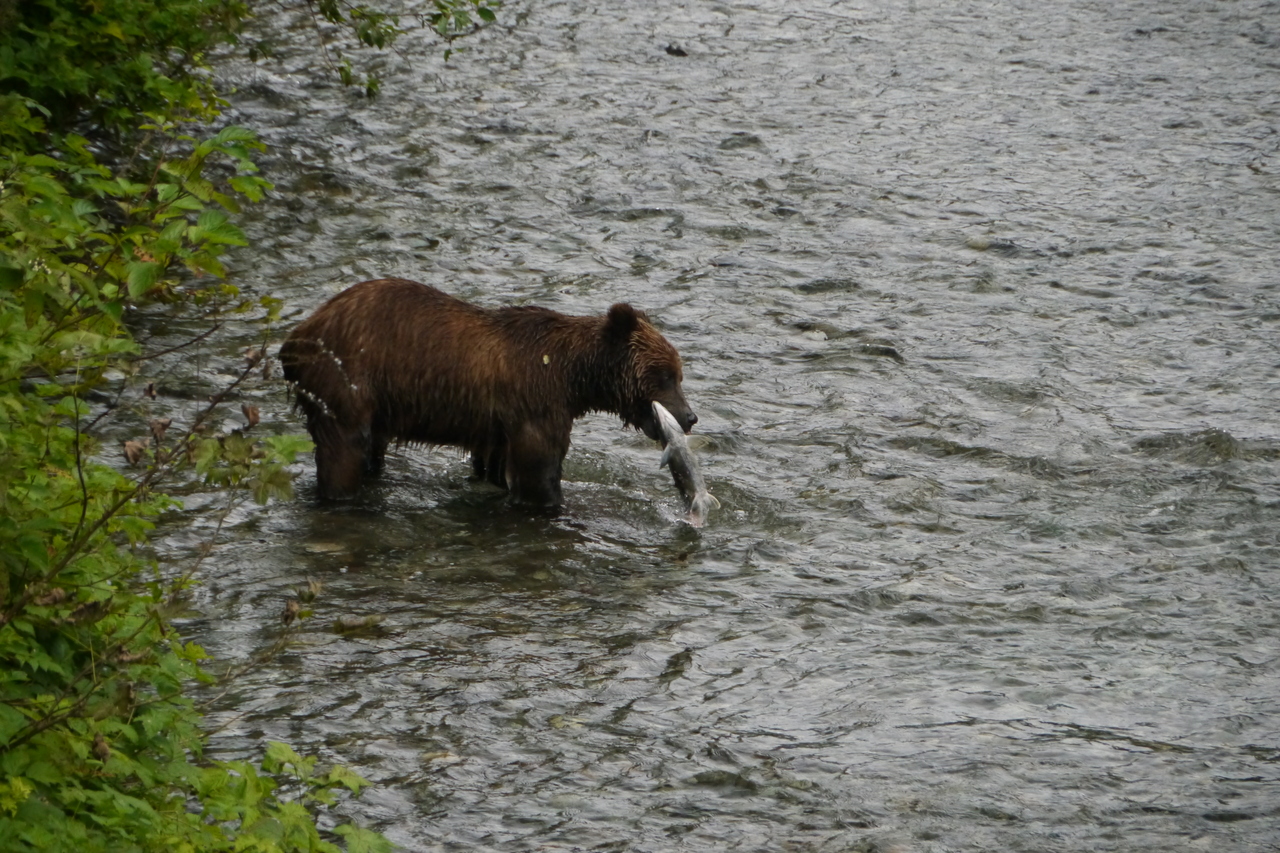
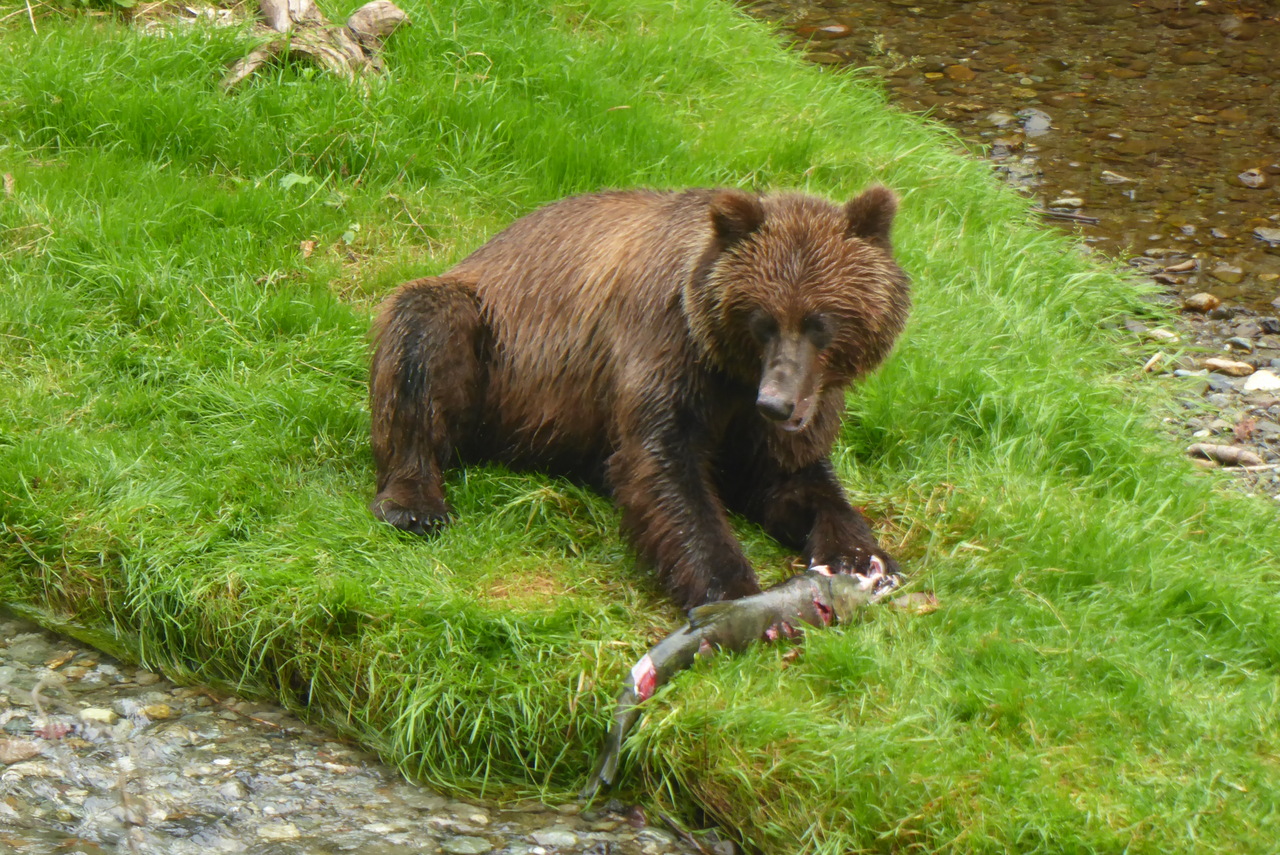
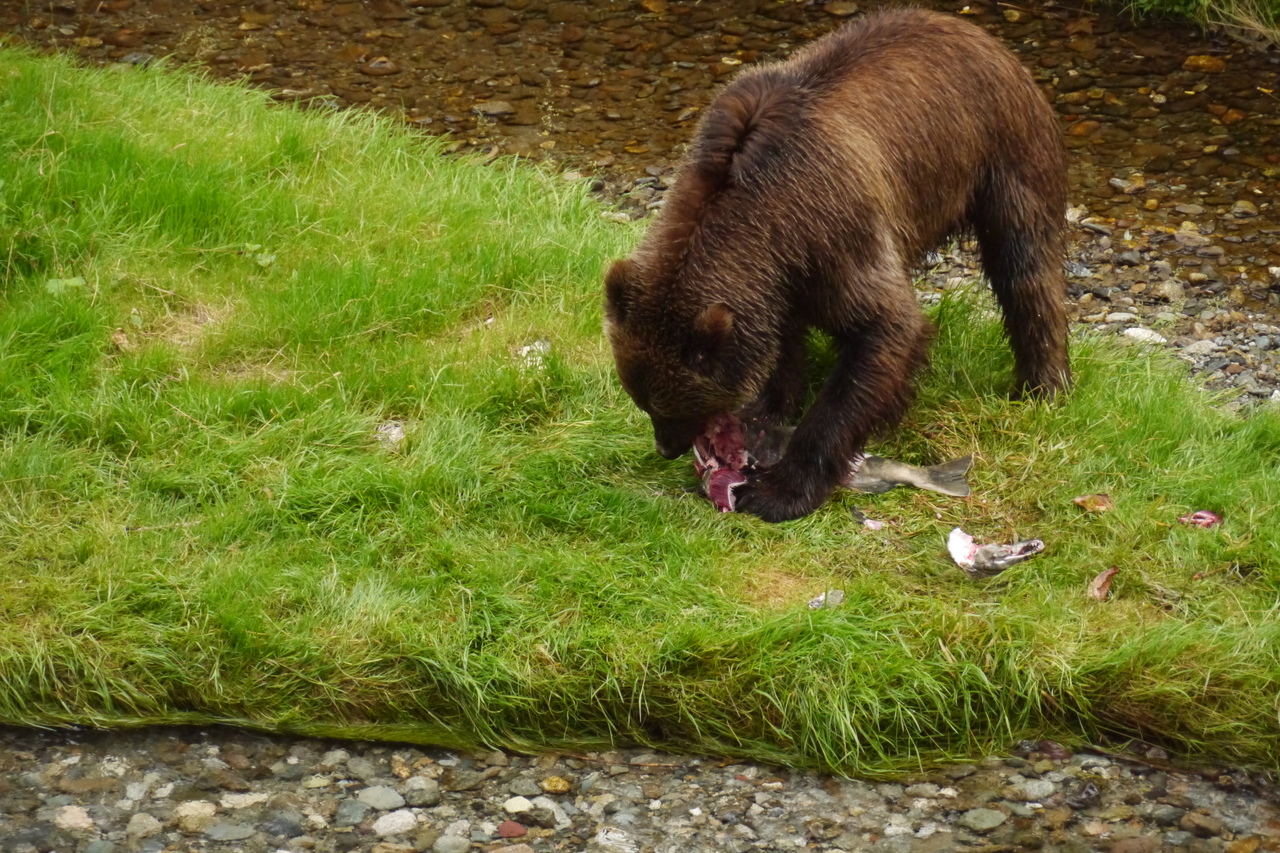
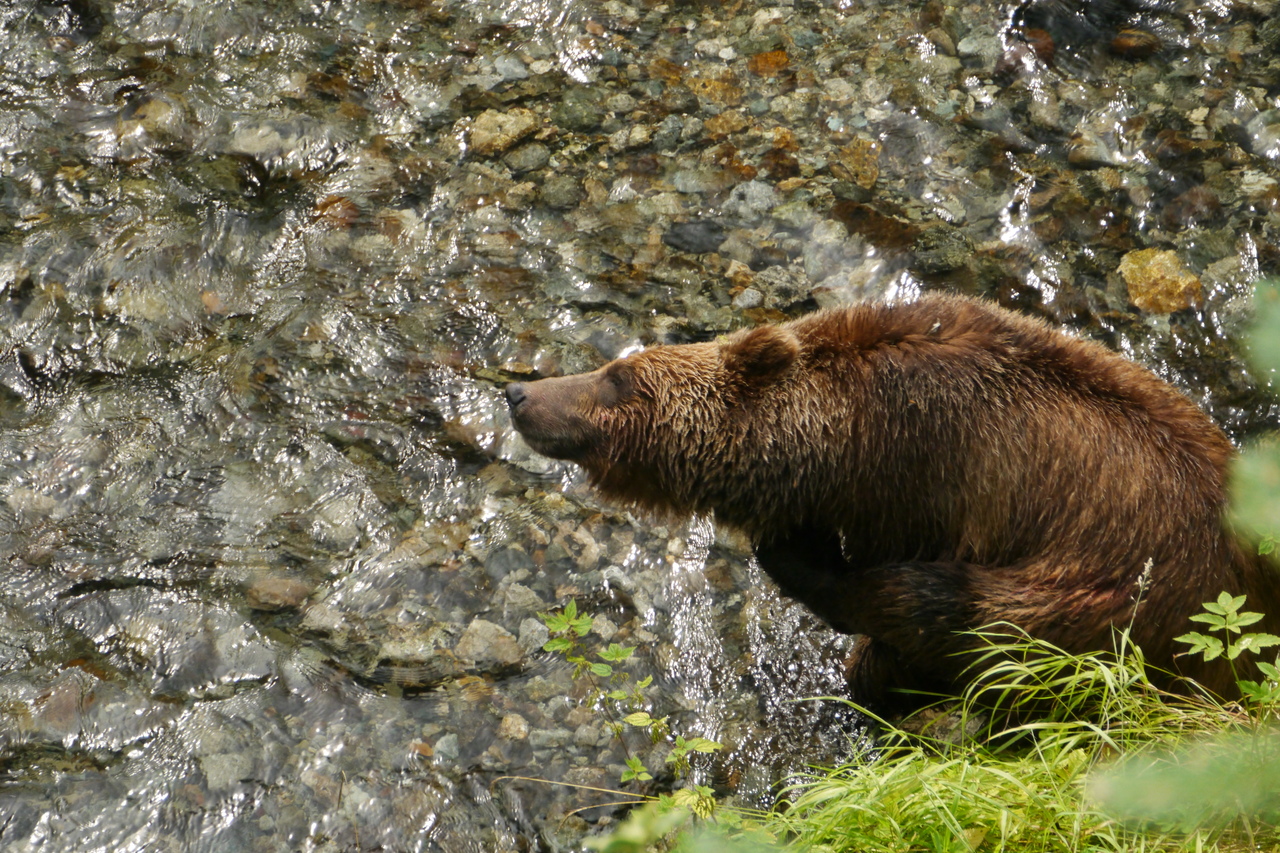
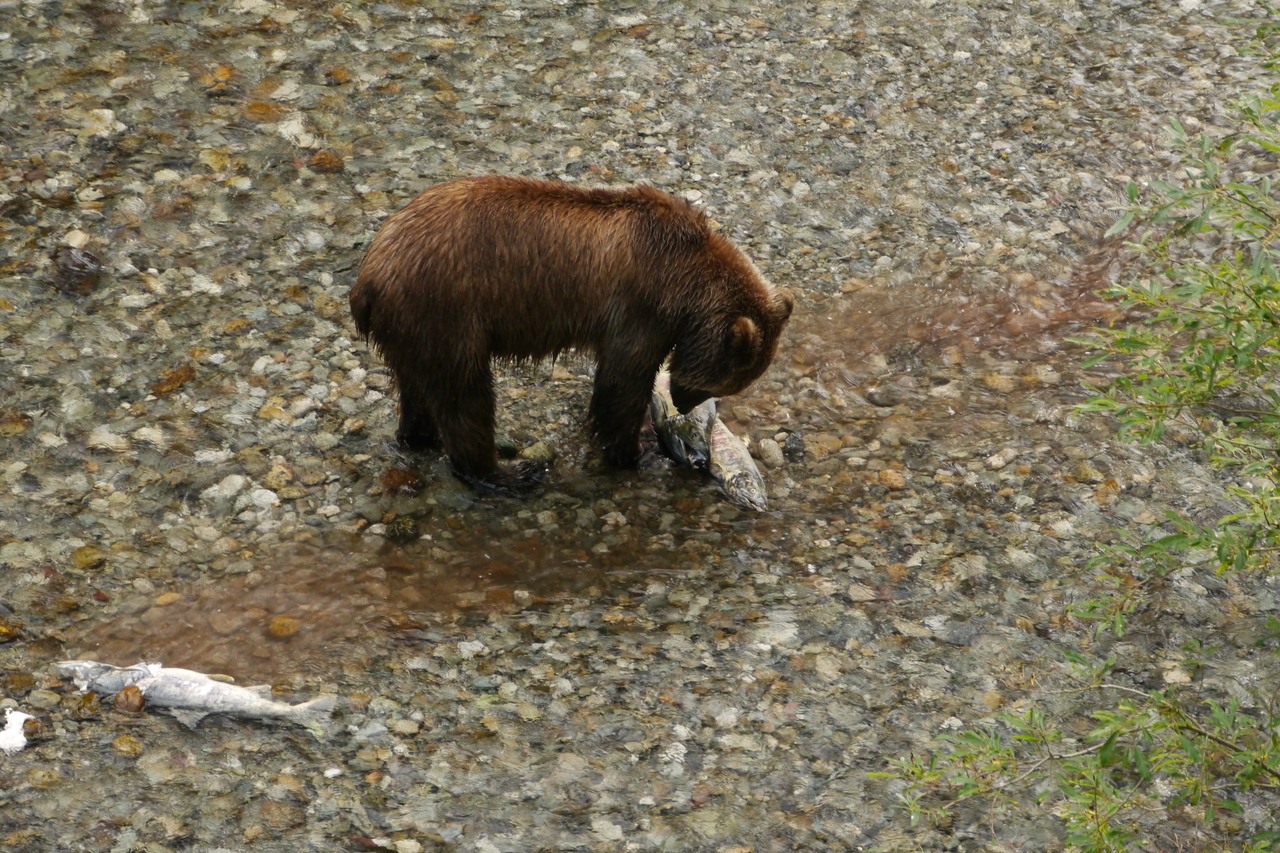
In Meziadin we stop at a fishing camp where some indigenous (First Nation) youth are catching salmon with dip nets. They are not interested in us. We are not going to be able to get fresh salmon here. We watch the salmon jumping up against a water wall and leave the fishing camp to set up camp ourselves a little further down the road. We notice that a little mouse is traveling with us, in the ventilation ducts under the floor of The Beast. We hospitably leave a few peanuts for our hitchhiker.
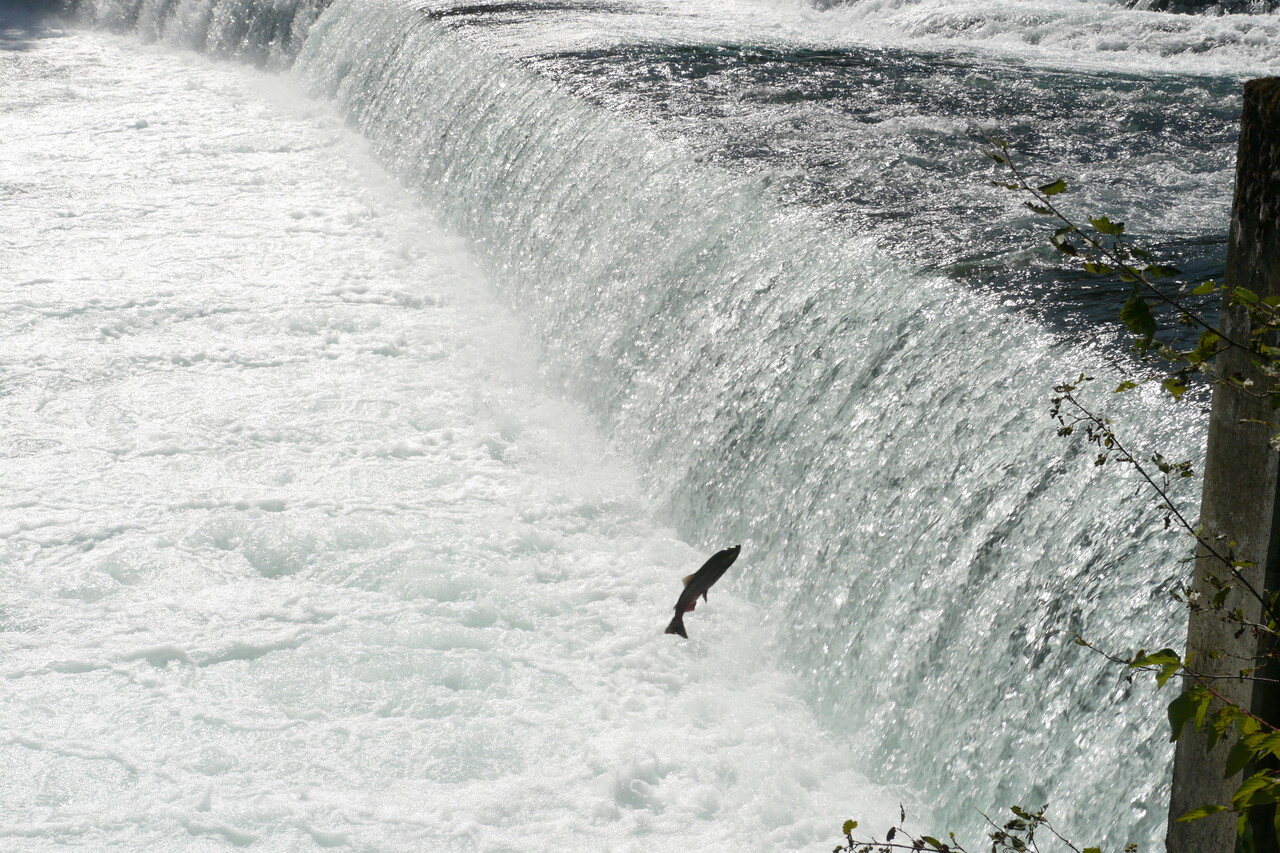
After a short stop at Helen Lake where we hang out with other overlanders for a few days we drive back a little north to Babine Lake, Canada's largest natural lake. I have been reading the book "The King of the Yukon" during the last few weeks and am fascinated by the salmon migration. Unfortunately, we are too far inland here - the salmon have not yet arrived at their spawning grounds, although the first ones are already swimming in the lake.
We make contact with some First Nation people and ask about salmon. They suggest getting salmon for us but we are not allowed to go with them to their reserve. After fifteen minutes they show us a bin full. Frozen salmon, cooked, shelf-stable salmon in glass jars and dried, smoked salmon (which they themselves call Indian Candy). But we'd really like another one of those super-fresh salmon. They clearly like the contact with us. Before our departure they keep insisting that Adriaan would accept a joint from them.
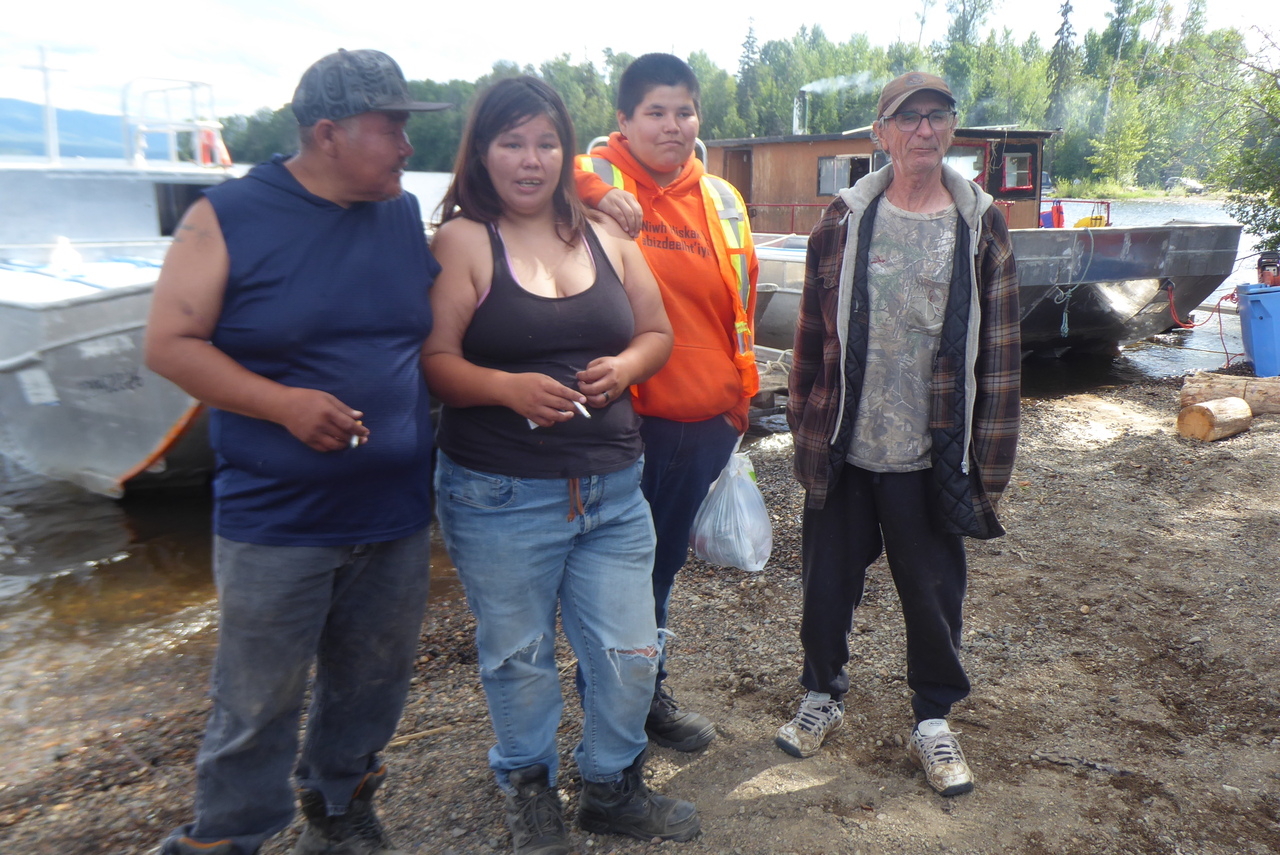
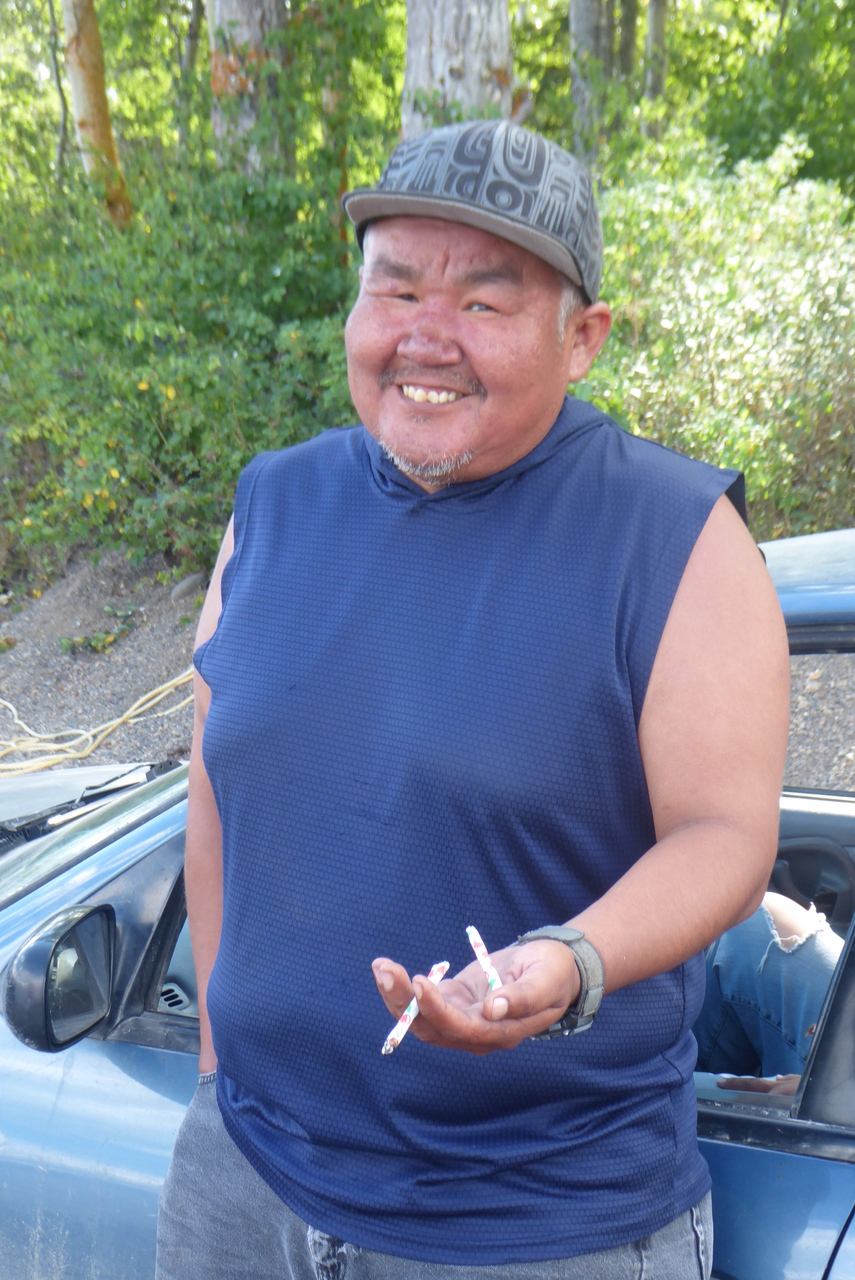
In the afternoon, we meet Leo at the same lake. He suggests that we go fishing with him and his grandson Liam on their boat. The salmon are about 15 meters deep - the lines are on 'sinkers' and have only a 'flasher', which makes the fish think there is competition. Adriaan catches, with a lot of help, 2 Sockeye salmon: a male and a female. Leo tells us that the indigenous people are entitled to many benefits such as: free housing in a reserve, no taxes, food stamps... Leo is funny, the afternoon is pleasant and after a short visit to his wife we go on our way. We get the salmon, complete with the eggs of the female (this "caviar" is usually thrown away here).
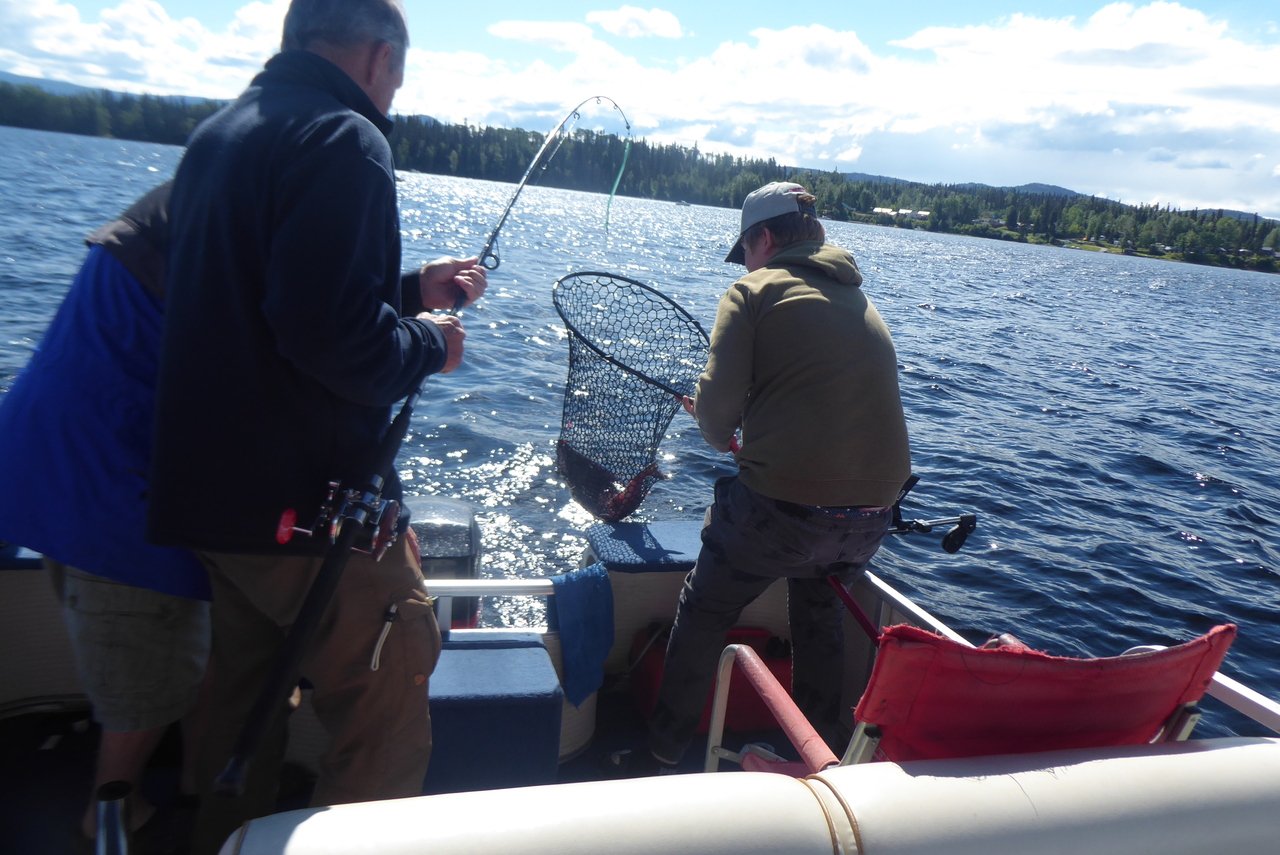
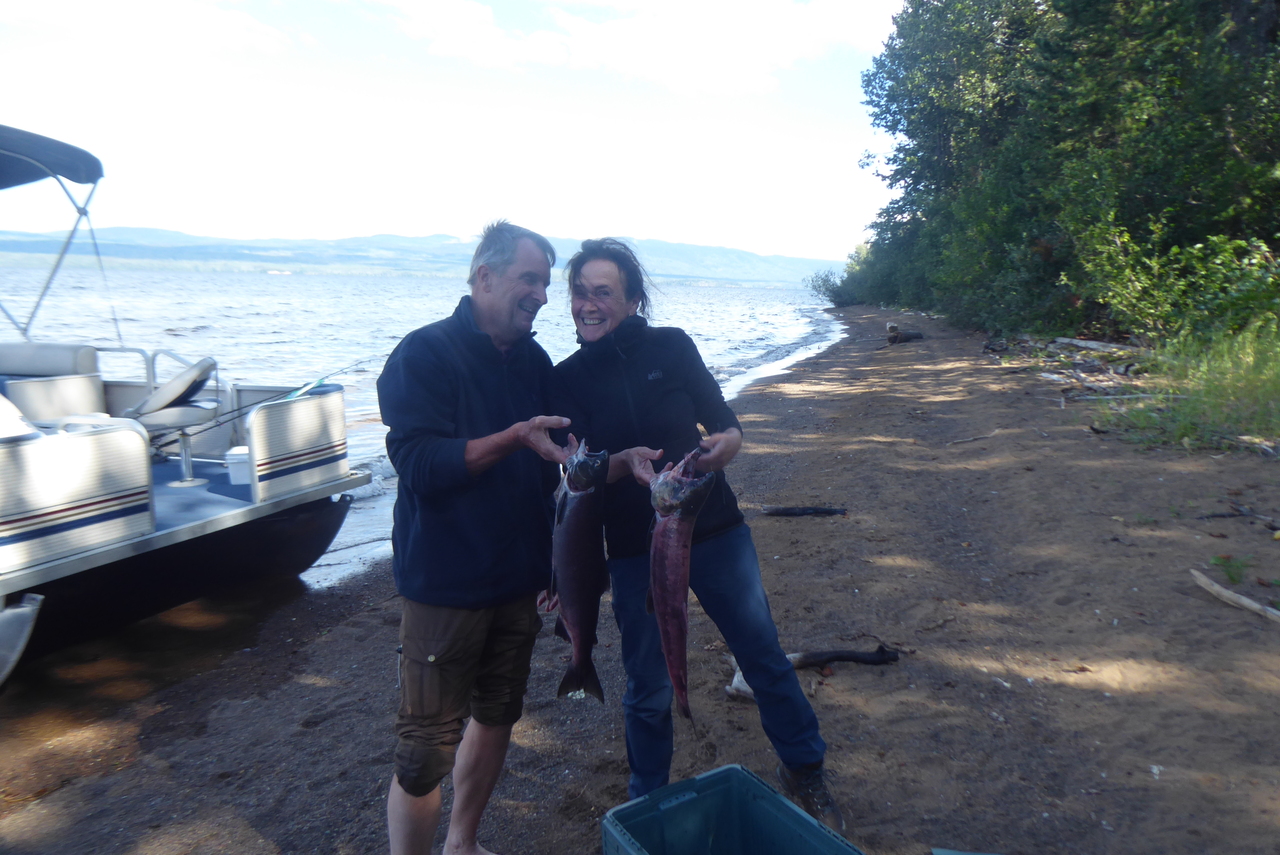
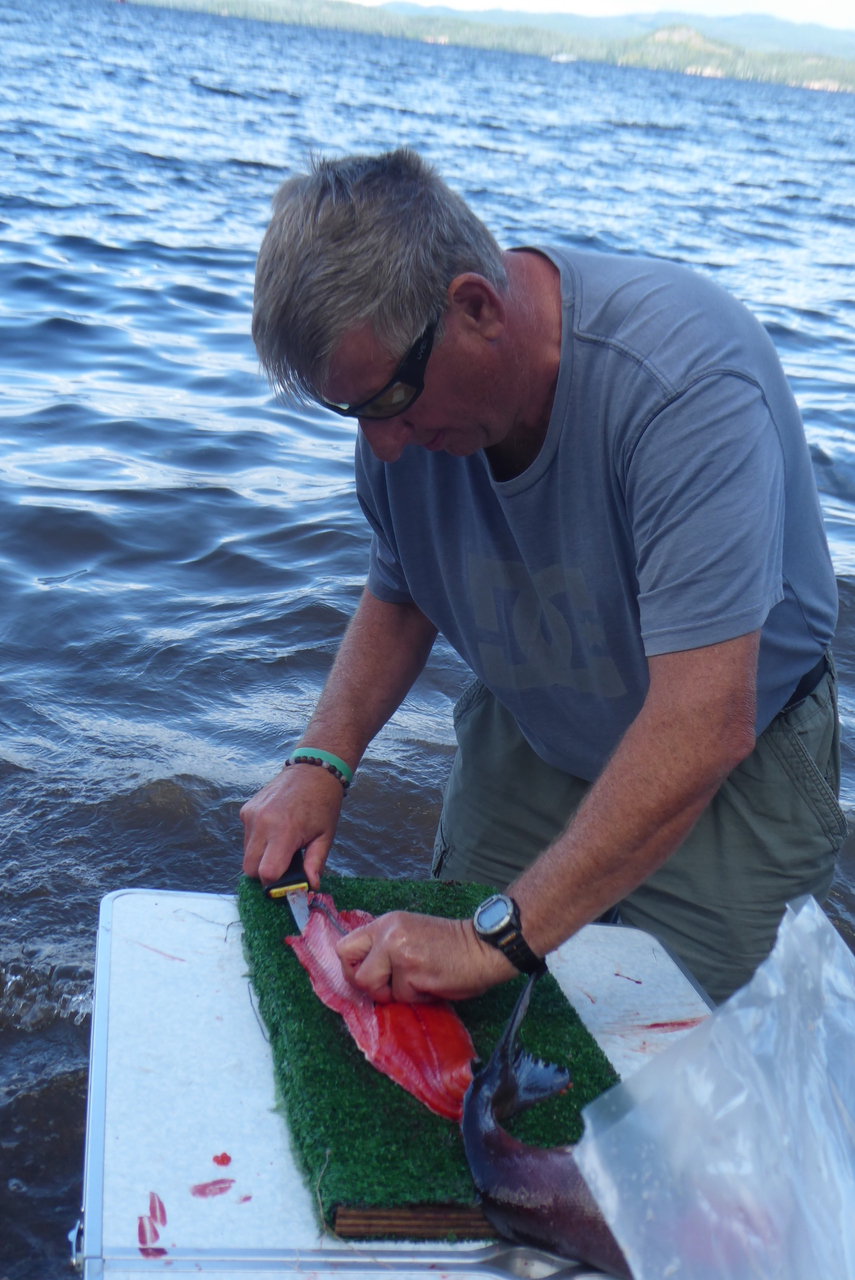
With that, we begin our salmon relay. Four days in a row, we will pull out all the stops to prepare wild salmon with a minimum of ingredients and options. The first evening we eat fragrant, sautéed salmon. After the meal I look outside and see above me a young black bear followed by his mother. They are watching us from above. It doesn't make for a very quiet night... In the morning our mouse disembarks, a bit slow, perhaps due to lack of water. Adriaan gives him a few more peanuts and hopes he will soon feel at home, some 1,500 kilometers south of his previous home.
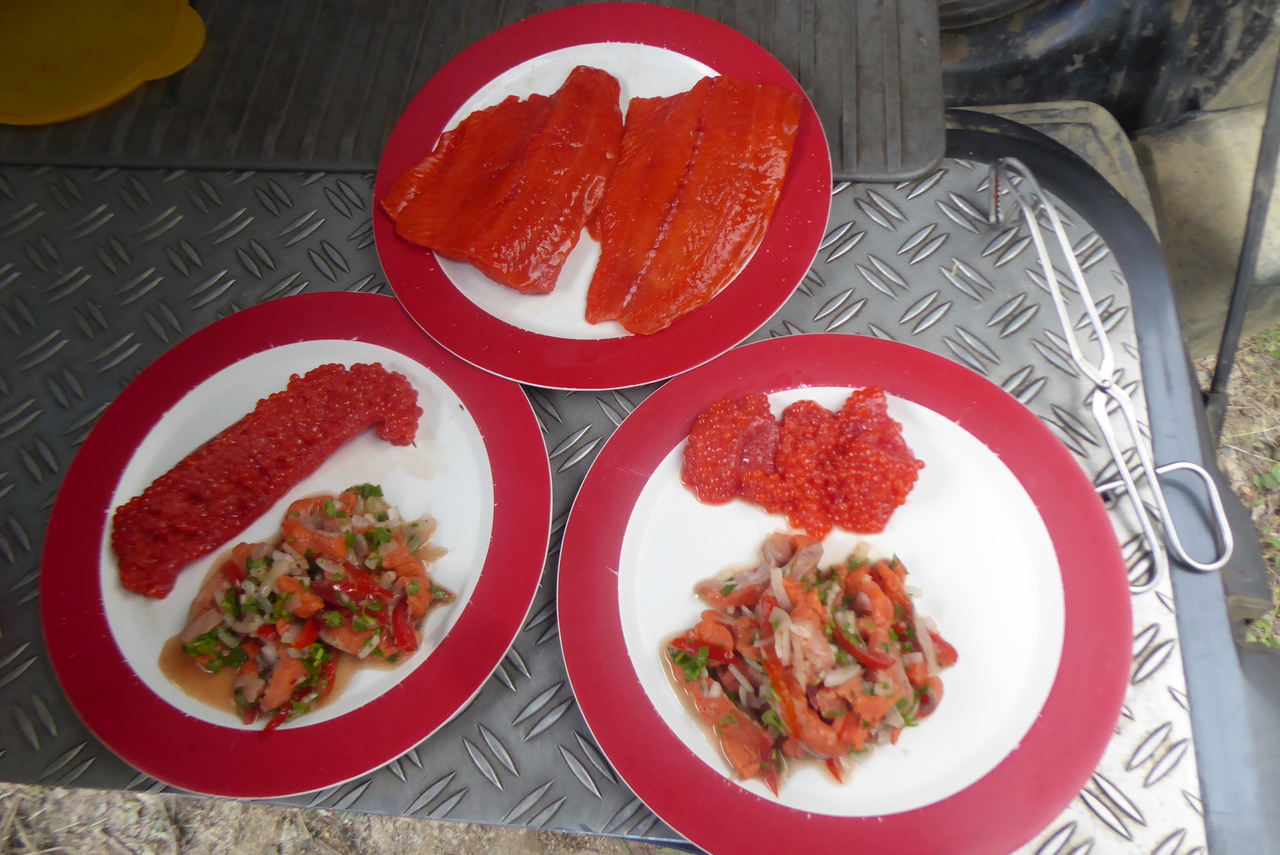
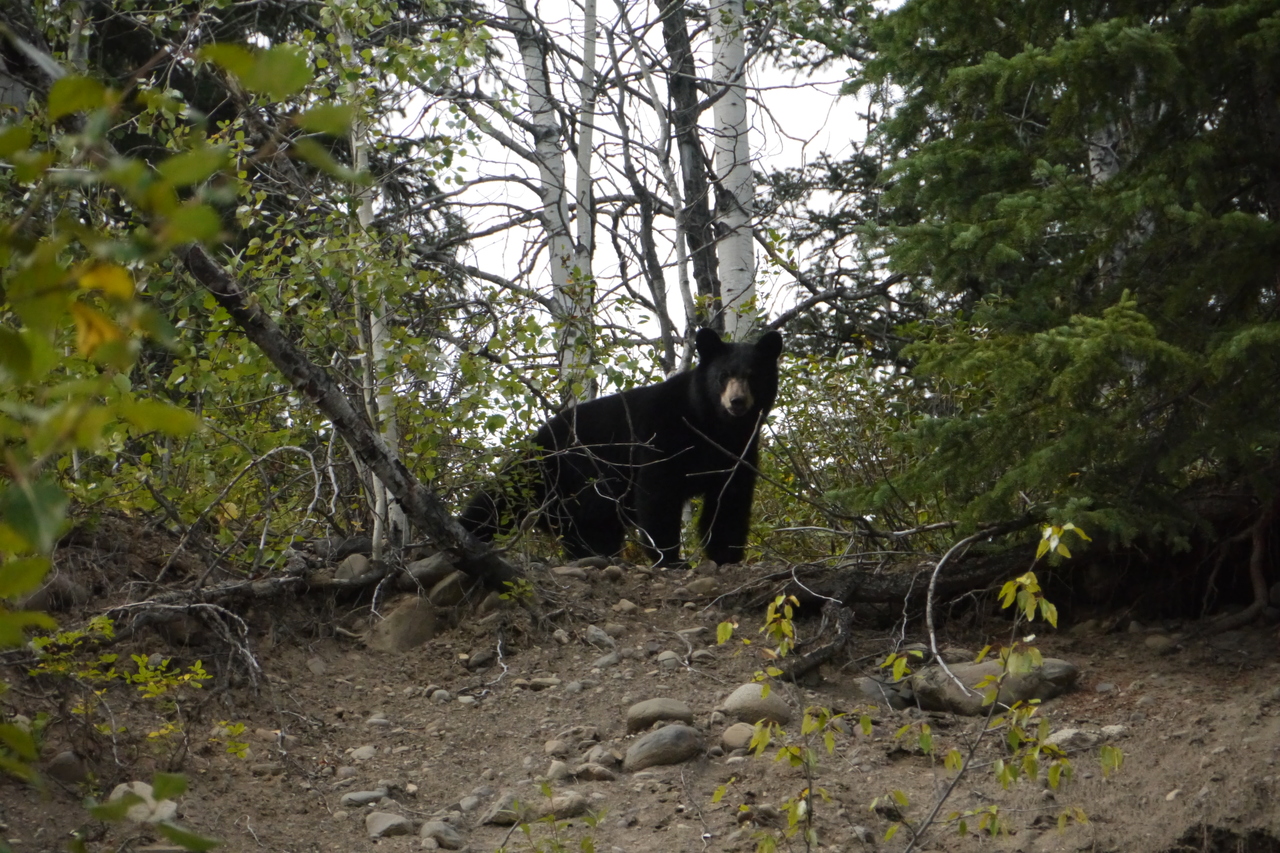
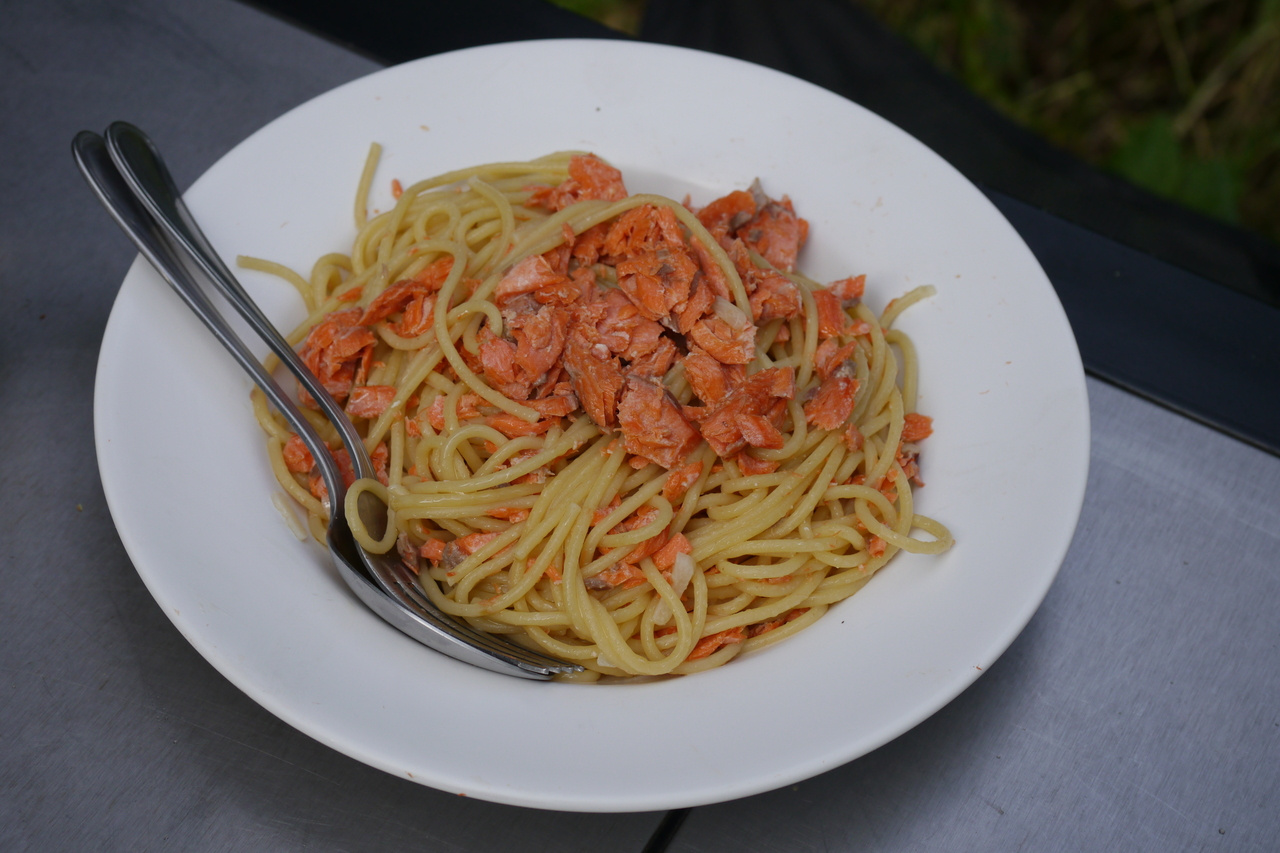
We explored enough side roads and continued on directly to Jasper and Banff. Jasper is the largest national park in the Rocky Mountains. We hike there, sleep exceptionally at a campground (wild camping is not allowed here) and drive the very scenic road through the park with a final stop at the Columbia Icefields.
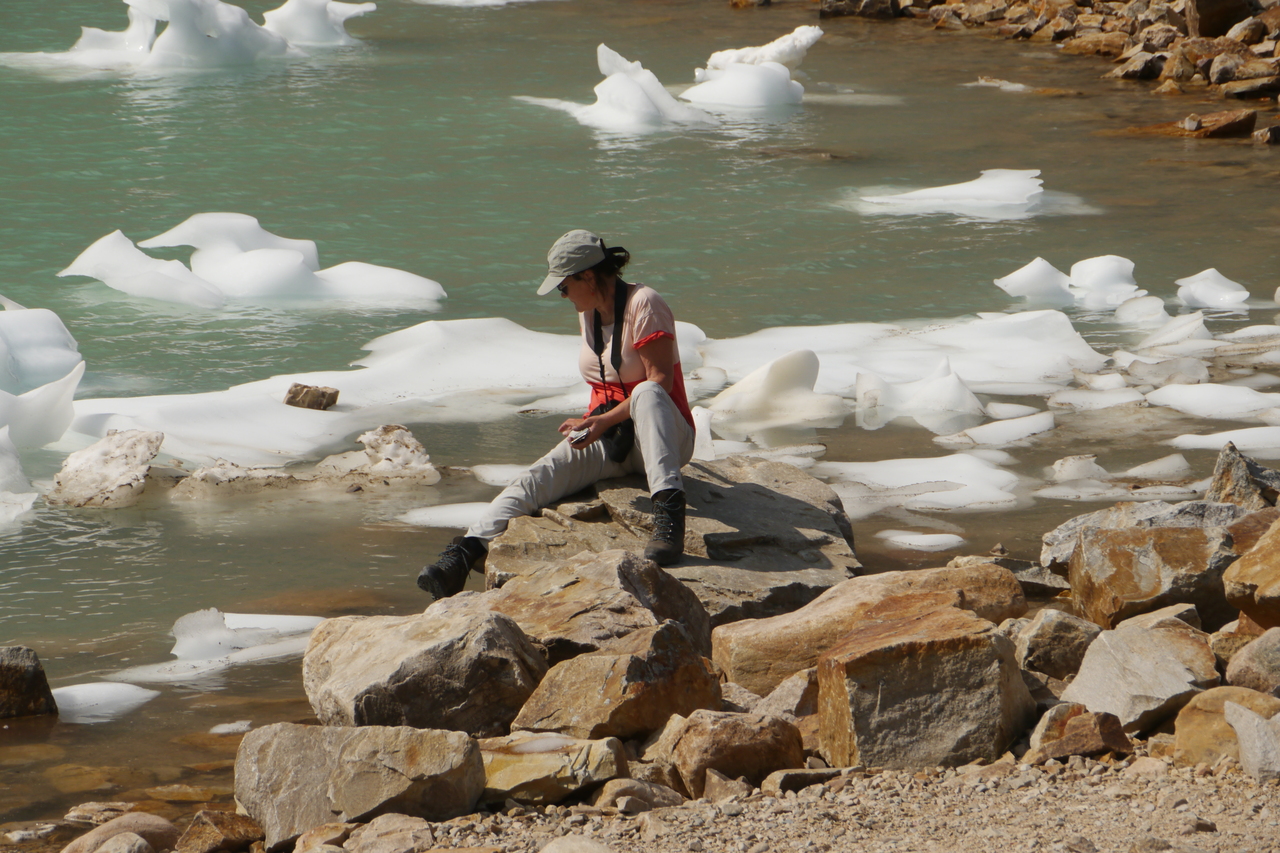
Part of the ice field, the Athabasca Glacier, is visible from the road. Since 1844, the glacier has been decreasing in size, but more rapidly in recent decades. There are signposts indicating where the glacier still reached in 2006. The glacier is melting by 5 meters every year. There are very many people and tourists driving up part of the glacier in special (smelly) snow buses. Not really our thing, our stop is short. We sleep outside the park and when we want to visit Banff the next day we hear a scraping sound on the left rear. The problem is a dragging rear brake. We go back to the same camping spot where Adriaan completely disassembles the brake unit, renders it passable, lubricates it, replaces the brake pads and puts it back together.
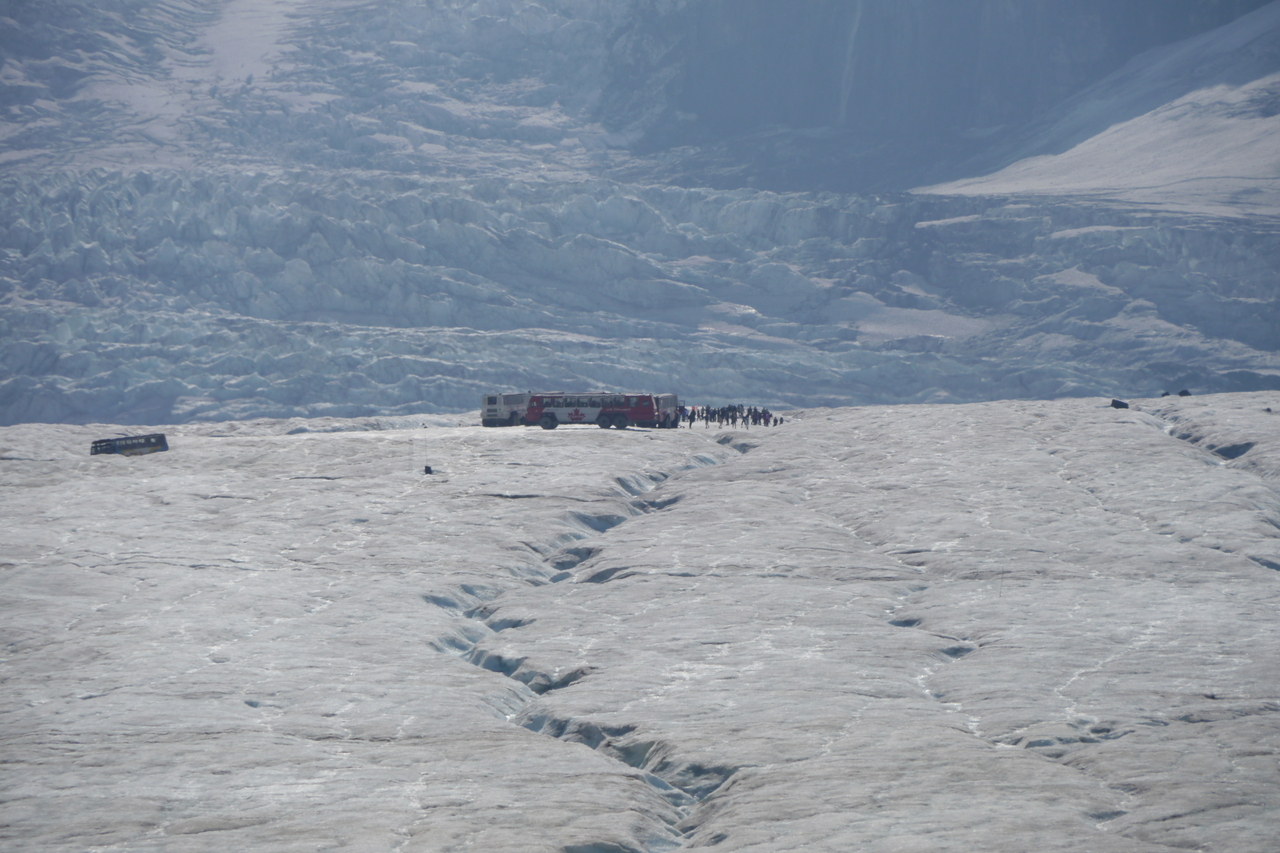
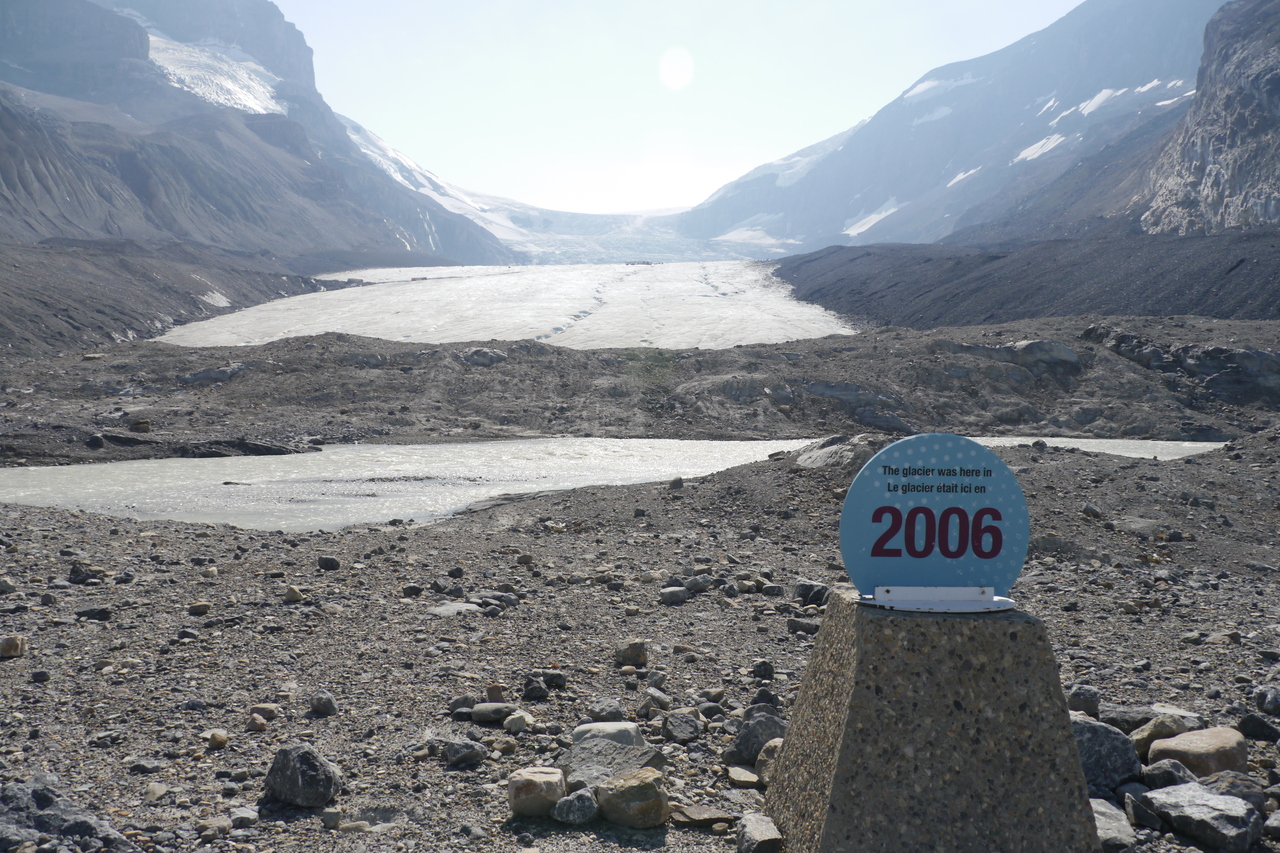
To get to Calgary, I choose (quite originally) a dirt road that leads through the forested foothills of the Rocky Mountains. I had imagined a quiet road... It turned out to be a very dusty, busy road: huge trailers and trailers with ATVs (All Terrain Vehicles) approach us. It's Labor Day weekend - the last of the school vacations, before normal life resumes. And it's sunny, too. By early afternoon, every spot within a short distance of the road is taken. We nevertheless find an excellent, quiet spot where only ATVs (and The Beast!) can go.
On Saturday we arrive in Calgary at the home of our friends Niek and Anja. Niek has ordered replacement parts for the Beast that will be installed in Calgary. We have a wonderful week of hiking, socializing, hairdressing, shopping, washing our tents and clothes, and putting everything in order before we start on our next leg.
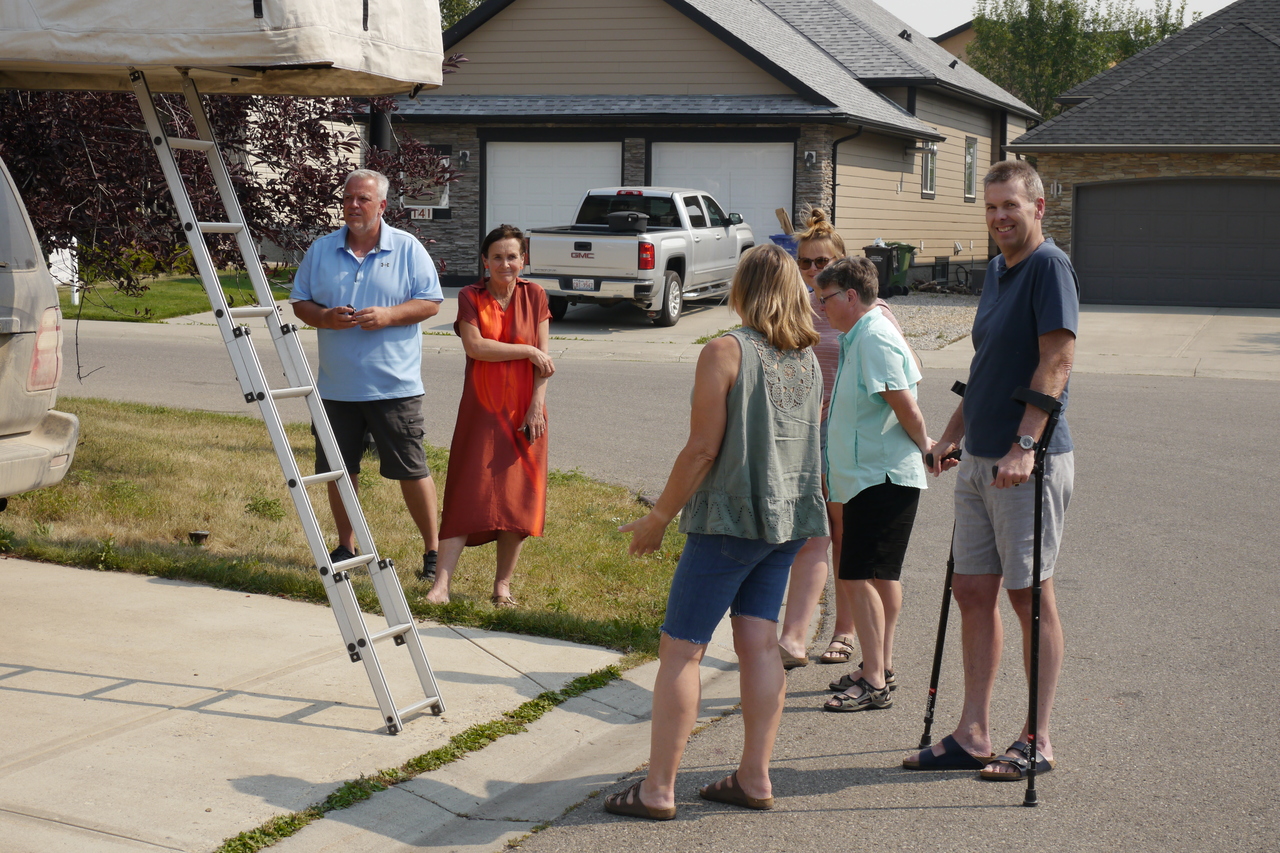
It's getting colder, we still have so many things we want, we have to move on before winter catches up with us...